
|
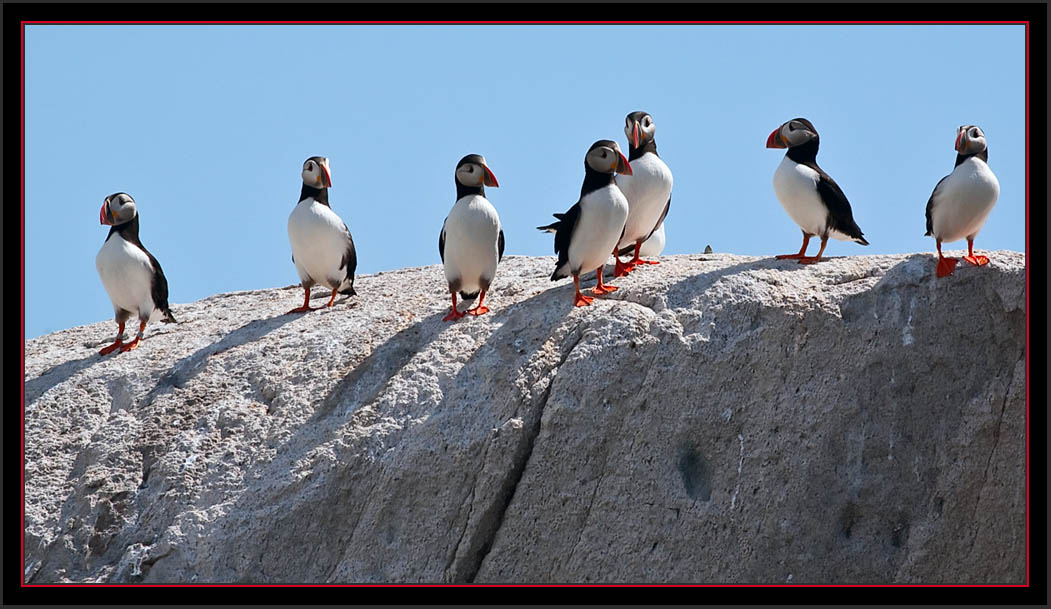
|
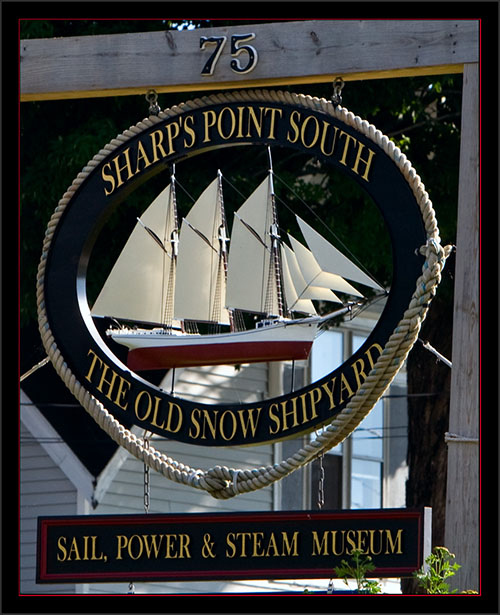
|
I received a call from Brian late Sunday afternoon – we were going but would keep an eye on a weather front moving into the area in late afternoon. I was packed, ready
and good to go. I was up early Monday morning and made the drive to Snow Park Marina in Rockland, where Brian puts the boat in, allowing extra time for any hold up on
the transit. I arrived plenty early, read the newspaper, sorted my gear to take aboard, walked the grounds, and eventually set up a camera to take some photographs while I waited…
Morning at Snow Marine Park...Canon EOS Mark III 1Ds, 1/250 second at 170mm; EF70~200mm f/2.8L at f/9, ISO 400 |
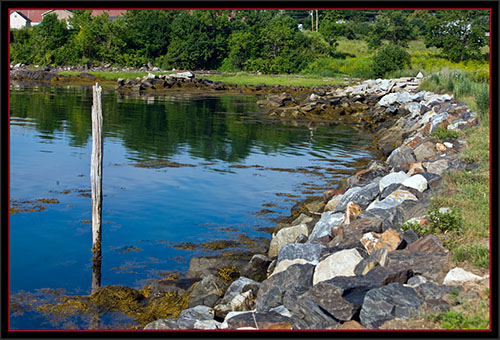
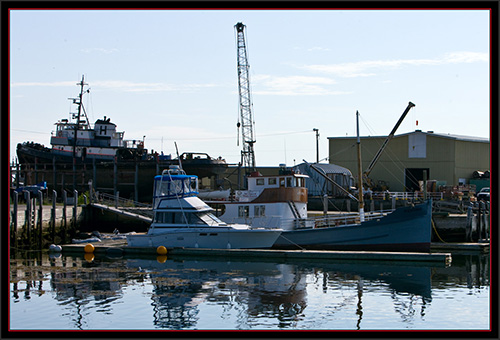
|
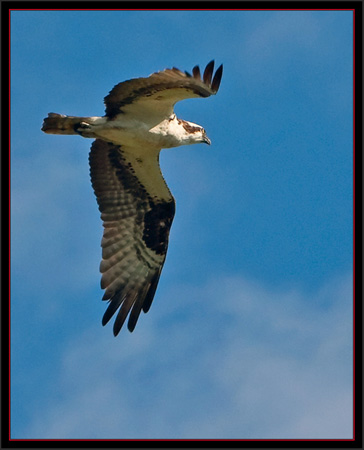
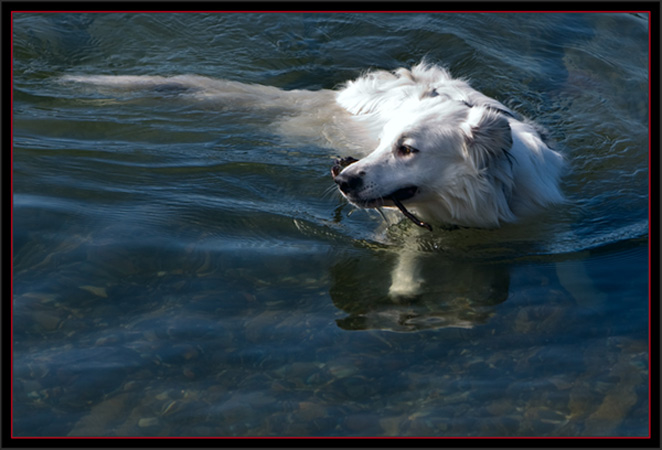
|
Soon enough I observed Brian drive in with the boat and trailer – it’s difficult not to notice this set up. He positioned the assembly to back into the water and float
the boat off. He made this look easy I thought and it was a one-man project for him. We said hello and talked for a bit, Soon I was moving my equipment to the boat to get
into dry bags in preparation to load up. I learned we were waiting for several other passengers - two fellows from the National Oceanic and Astmospheric Administration (NOAA), going out to assess the island’s lighthouse mounted
weather station, and a videographer from Bar Harbor, Jeff Dobbs, heading to Matinicus Rock to shoot some documentary footage. It was shaping up to be a beautiful day and
looked calm from what I could see from shore.
Brian Benedict, Deputy Refuge Manager - Maine Coastal Islands National Wildlife RefugeCanon EOS 1Ds Mark III, 1/640 second at 78mm; EF 70~200mm f/2.8L at f/9, ISO 400 |
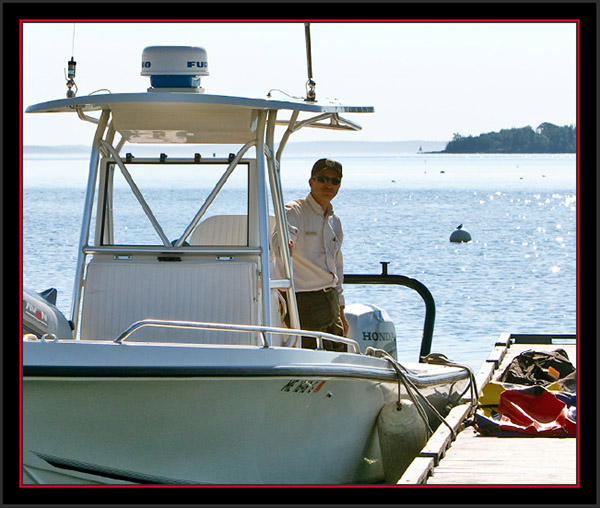
|

|
Rockland Breakwater Light from the Water
Canon EOS 5d, 1/1600 second at 190mm; EF 70~200mm f/2.8L at f/9, ISO 640
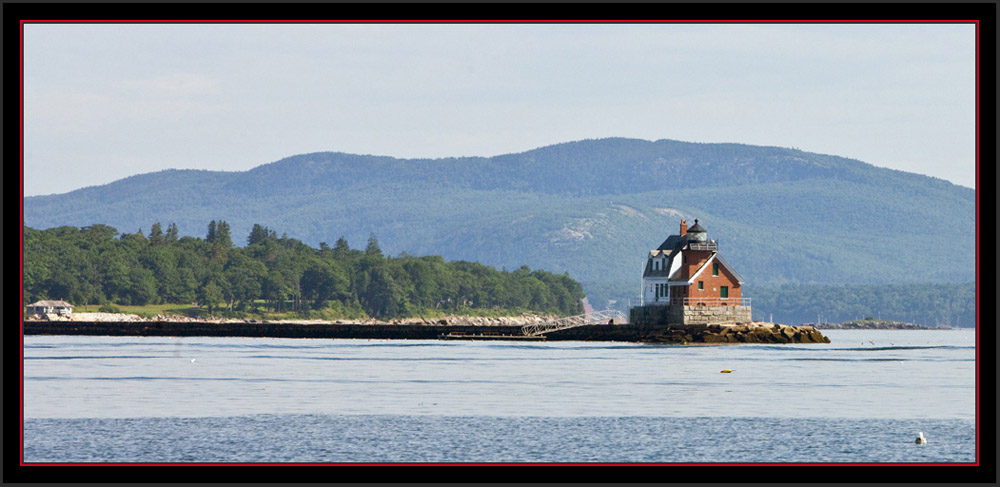
|
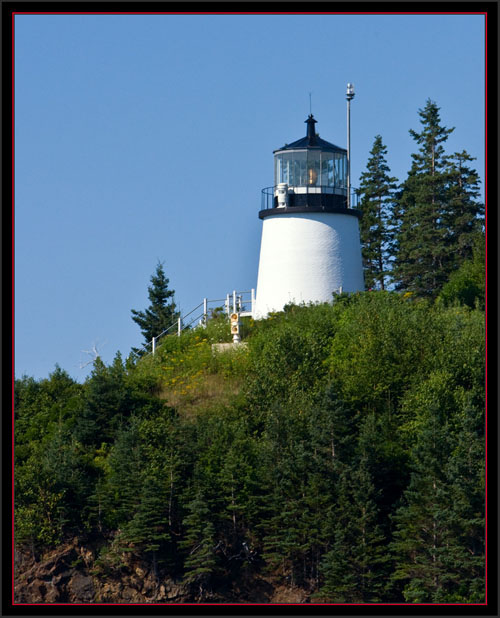
|
The trip out was excellent. The sea was calm and we soon got into the rhythm as the boat bucked into the waves at full speed. I viewed more Wilson’s Strom-Petrels this
morning then I’d ever observed at one time. In some cases there would be ten or twelve individuals hovering around a spot on the ocean, which I thought was unique. I
thought it would have been nice to have a 400mm lens mounted just in case we got closer to any of these birds, although it would have been a chore to pan, achieve
critical focus and obtain a good shot from this rocking platform. Brian and I had discussed photographing refuge islands on the way out. We weren’t going to approach
any not on our route, but he did point some out and I took a few exposures at distance. There was a haze in the air which I could see easily enough through the lens.
Owl's Head Light...Canon EOS Mark III 1Ds, 1/1600 second at 200mm; EF70~200mm f/2.8L at f/9, ISO 640 |
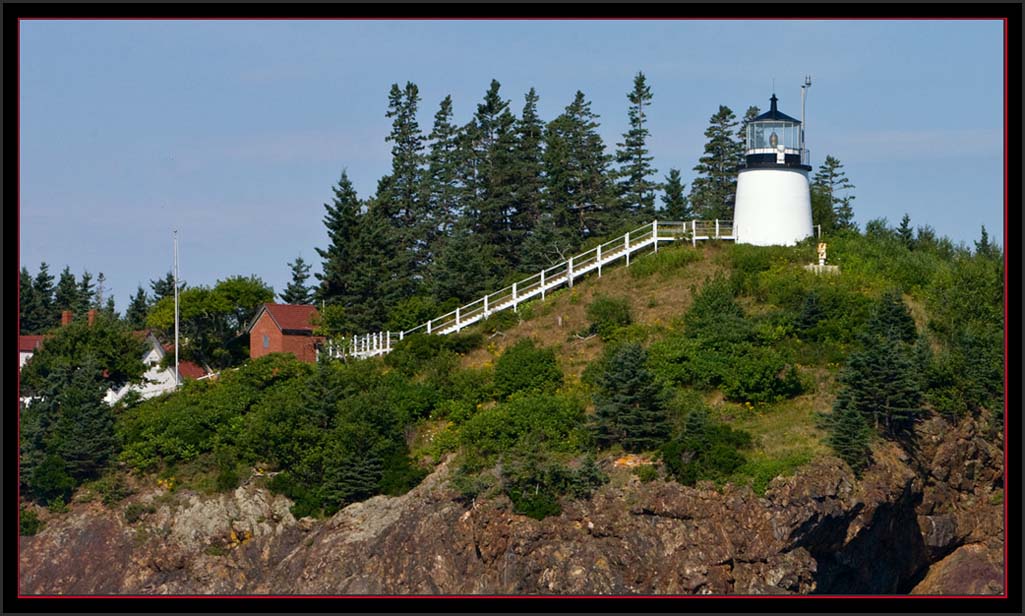
|
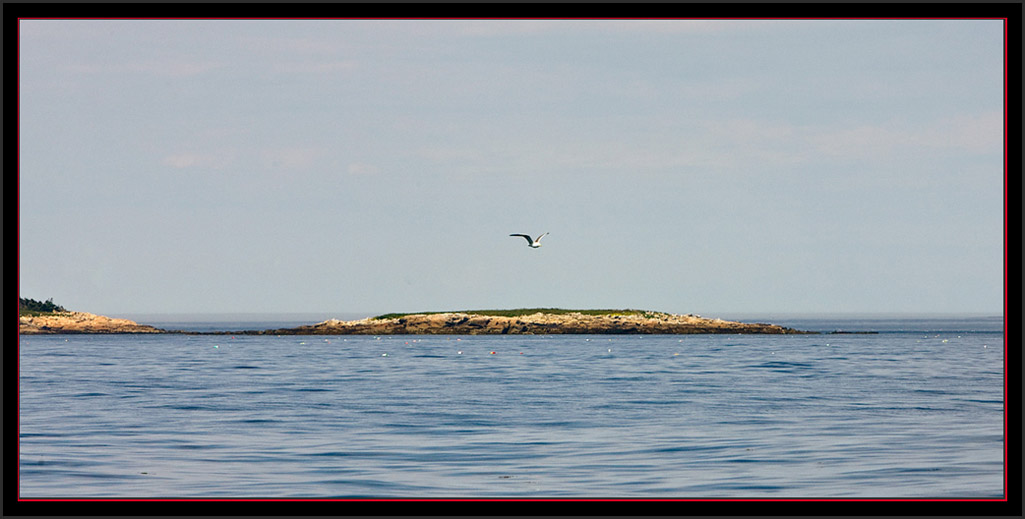
|
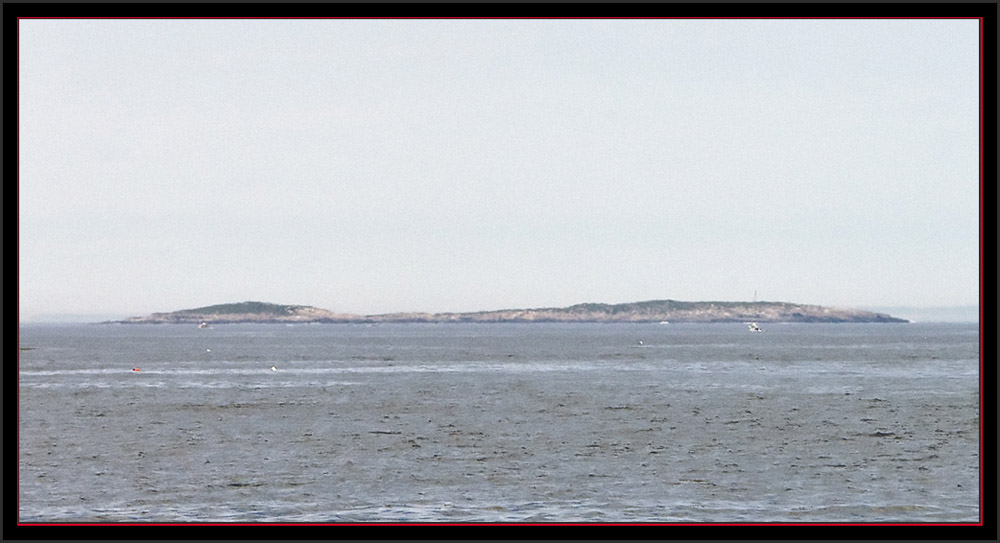
|
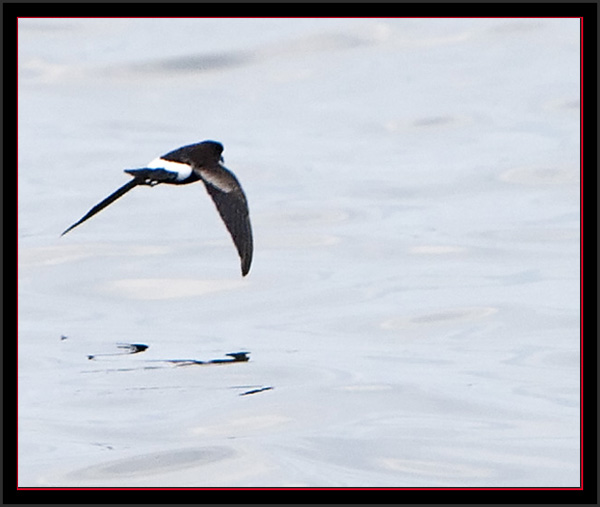
|
I didn’t take many exposures from the boat, mostly I kept one hand on a grab rail to keep from getting tossed about. Every now and then I would see an
opportunity and attempt to time the boat action to take a shot or two. I was on the starboard side next to the seat where Brian was operating
the vessel. I knew from experience that one could rest against this seat and plant a leg on the gunwale to be braced enough for a shot. This and some luck
in timing and it may just work. As I was doing this I looked at my raised right leg – ‘that’s odd’, I thought viewing the scene. Then I recognized the
problem - I had my waders on the wrong feet... Remember earlier in this account where I indicated one is expected to be ‘physically fit and mentally
alert’? Now I was concerned. However, I’d walked around quite a bit before getting on board and never noticed any issue so I didn’t see it as being
problematic. Once ashore I’d change into hiking boots anyway. Hmmm - maybe nobody would notice before I could get them off…
Wilson's Storm-Petrel...Canon EOS Mark III 1Ds, 1/1600 second at 200mm; EF70~200mm f/2.8L at f/8, ISO 640 |

|
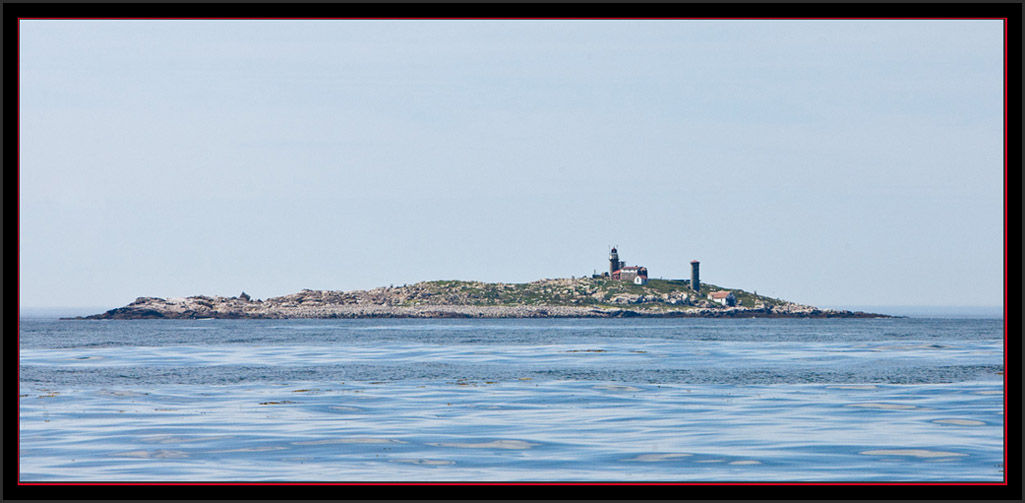
|
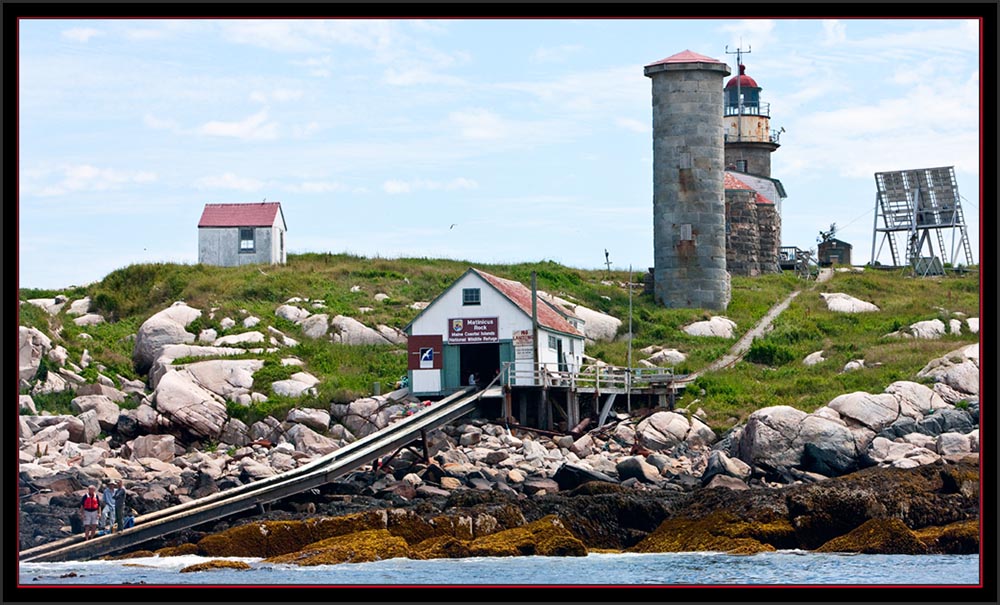
|

|
This description of Matinicus Rock is excerpted from the website, ‘New England Lighthouses: A Virtual Guide’: ‘Matinicus Rock is a windswept 32-acre granite island, 18 miles off the mainland and 25 miles from Rockland, the nearest port. "The Rock" is five miles south of the much larger Matinicus Island. It was recorded by Capt. John Smith in 1614, who made notes in his log about 'the rock of Mattinack.' 'Because of its prominent location on the approach to busy Penobscot Bay, Congress and President John Quincy Adams authorized the building of two lighthouses on Matinicus Rock in 1827. It was considered a primary seacoast light station.' I urge you to visit the link pursuant to history of the light – you’ll find it interesting… Matinicus Rock is maintained as a bird sanctuary with limited access. The station was established in 1827; the present lighthouse was constructed in 1857 with a Third-order Fresnel optic. At one time there were two lighthouses. The north light was taken out of service in 1924 and the remaining south light automated in 1983. The south light is of granite construction with a tower height of forty-eight feet. The modern lamp, a VRB-25, flashes white every ten seconds. There’s also a fog signal which blasts every fifteen seconds. The 1846 keeper’s house, oil house, circa 1890, and a boat house remain on Matinicus Rock. |
As Brian maneuvered and tied off the boat I was taking in the sights. Everything I could see going on was exceptional – puffins, guillemots, razorbills,
various terns and laughing gulls were in the water and airborne all around us. I could have stayed right where I was for the morning and been content panning
birds flying in, out and around the boat. We discussed the order for going to shore as Brian launched the inflatable. I indicated it didn’t matter but if
he’d take me in I could photograph the effort to land the others. I continued to pan and shoot whenever the opportunity presented.
Atlantic Puffin Flyby - Maine Coastal Islands National Wildlife RefugeCanon EOS 1Ds Mark III, 1/1600 second at 200mm; EF 70~200mm f/2.8L at f/8, ISO 640 |
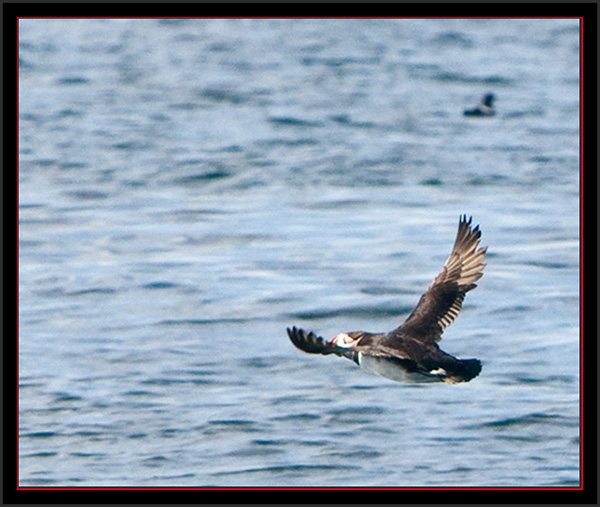
|
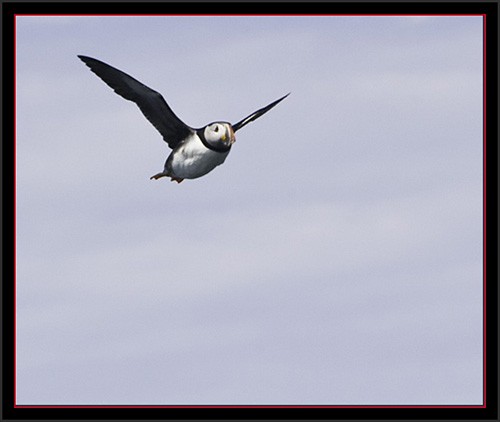
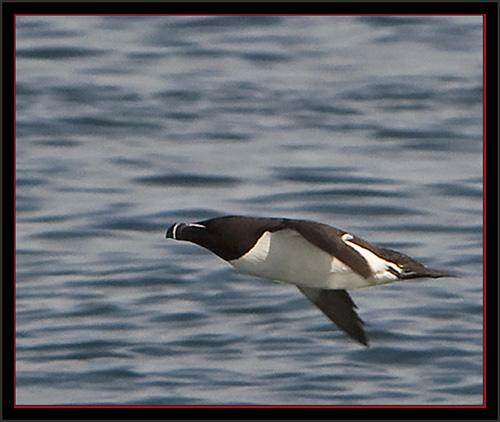
|
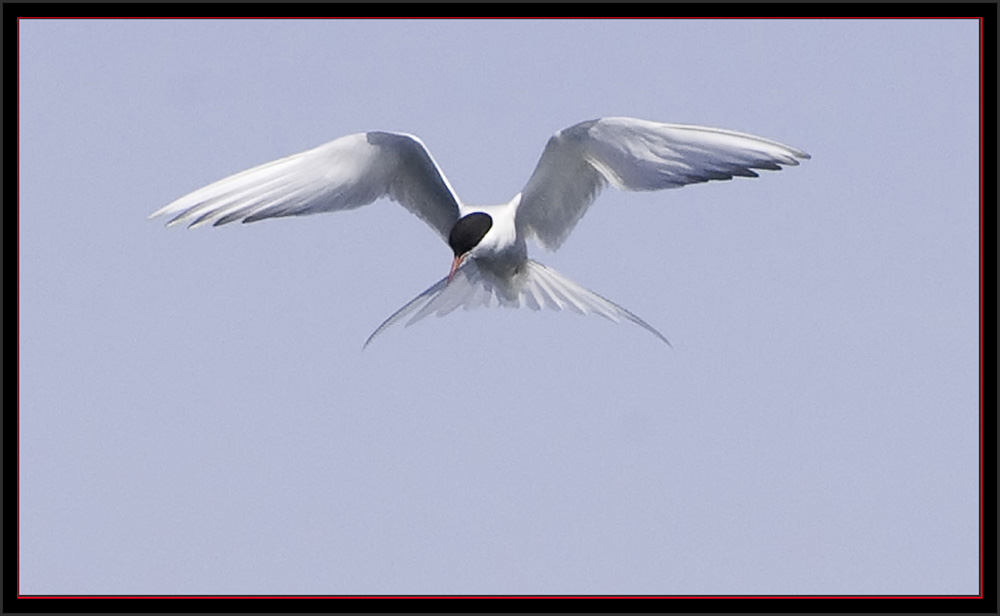
|
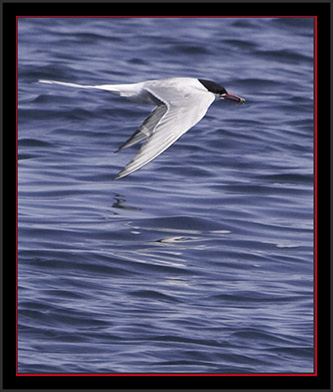
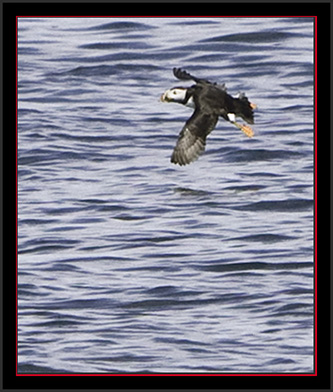
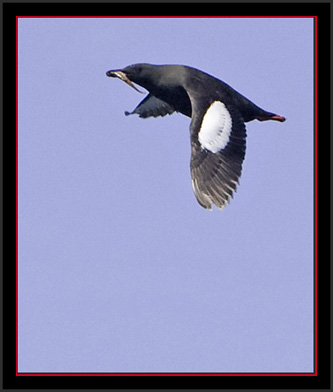
|
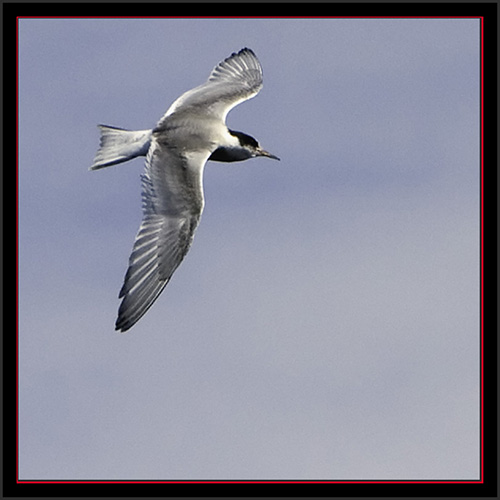
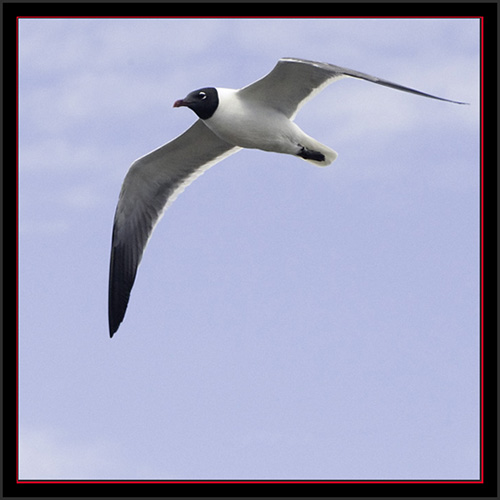
|
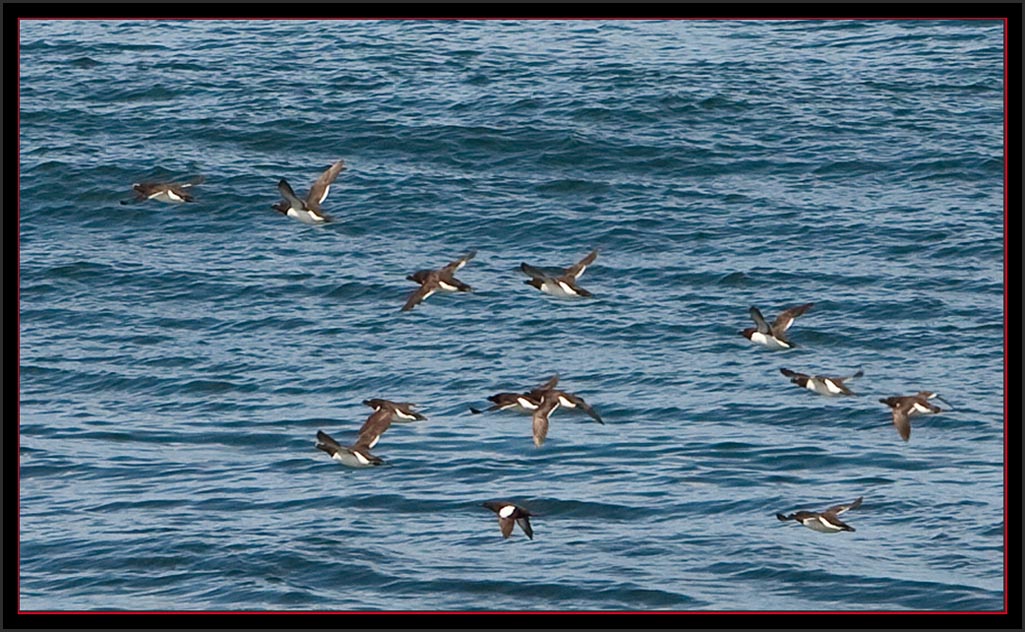
|
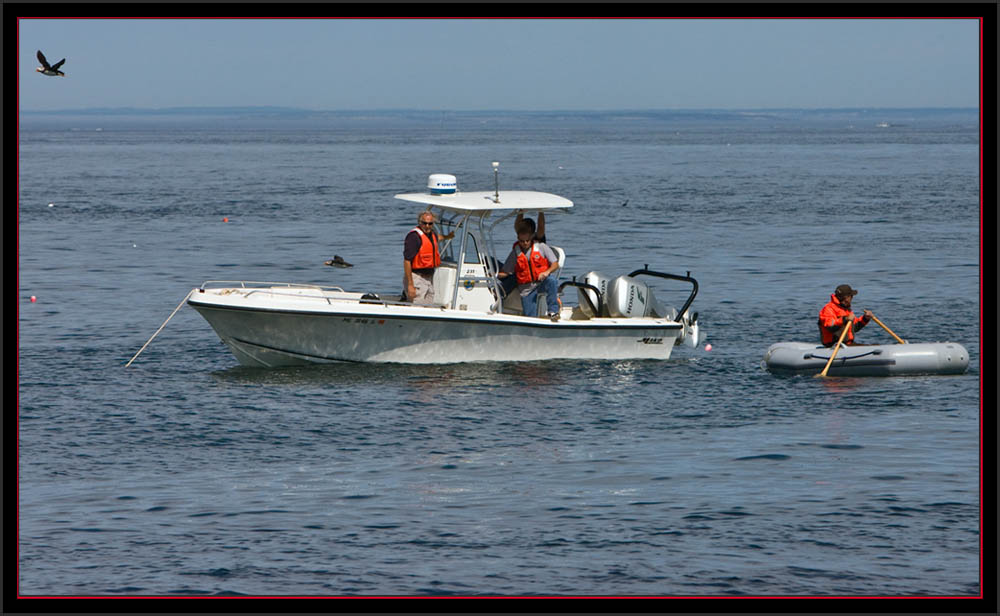
|
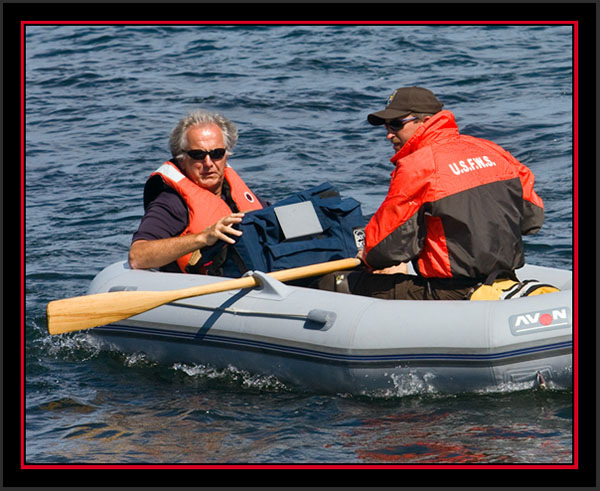
|
With Brian’s direction I got off the inflatable and onto the ramp without incident after timing stepping out with the incoming wave action. My duffle bag was heavy – I was over packed, but this was the
first trip here and I wasn’t certain what may be required. There wasn’t much I would have left behind but there were enough items I didn’t use to have made things a bit easier. I had three cameras and multiple lenses
including the 600mm f/4L lens with its dedicated tripod.
As I stepped on the slippery runners I was greeted by Caroline Poli, one of the Audubon leaders, who asked first thing if I knew my boots were on the wrong feet. So much for a discreet entrance I thought as I got out of the way…
The staff on shore quickly unloaded the inflatable and I went up the ramp to find a better vantage point to take some exposures.
Coming Ashore...Canon EOS Mark III 1Ds, 1/1600 second at 200mm; EF70~200mm f/2.8L at f/8, ISO 640 |
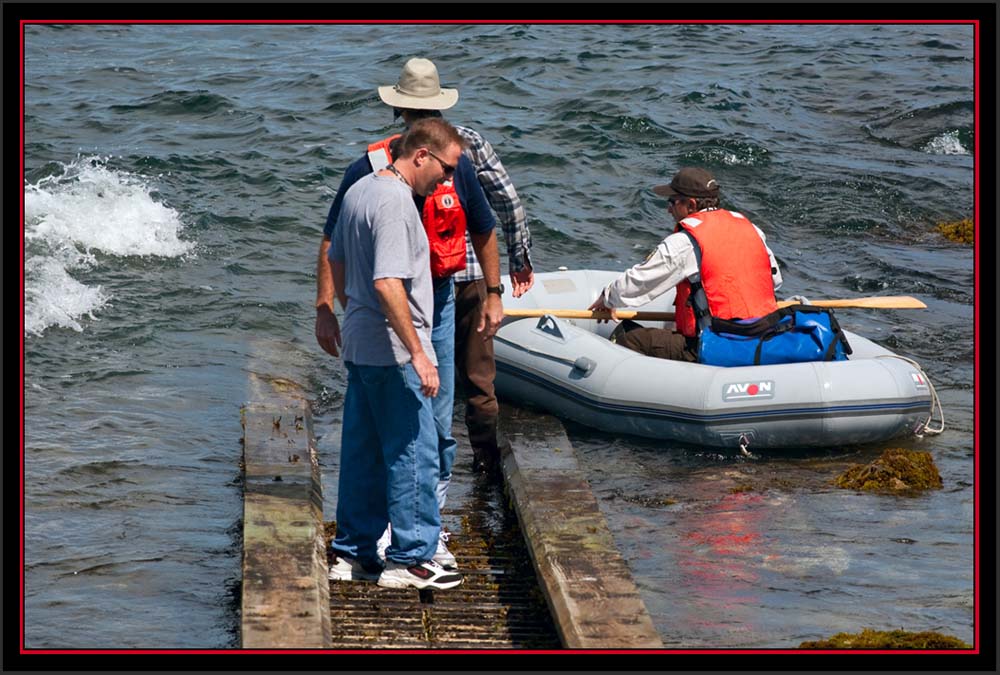
|
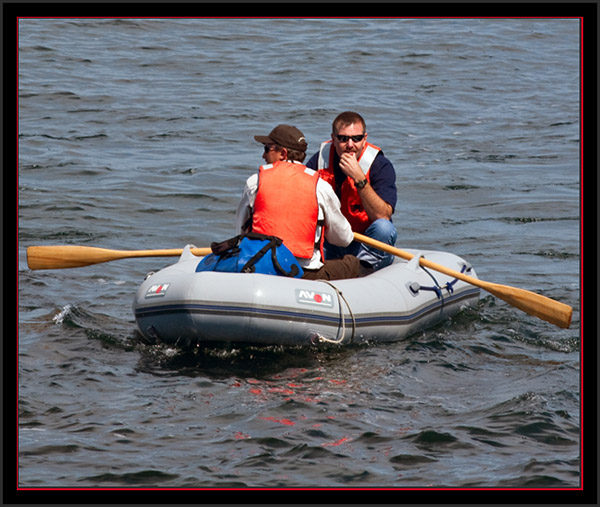
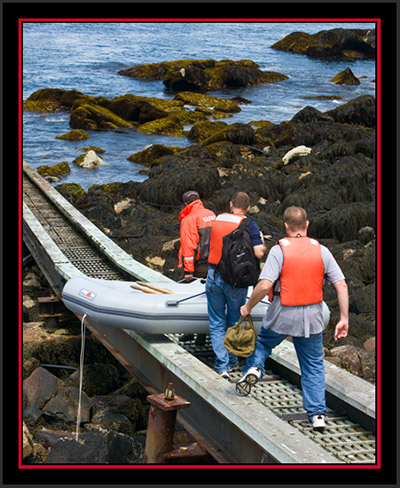
|
After one shuttle trip per person we were all landed on the island along with our gear. With my equipment around me at the top of the ramp in front of the boat house, I started to assemble my tripod and lens system preparing it for use.
Jeff was talking with the Audubon staff about his video work, where he’d like to go, what he hoped to accomplish, etc. I was setting up, checking the cameras and looking around at the plethora of photographic opportunities when I was
asked what I may require. I stated simply that I didn’t need anything... I was in a ‘target rich environment’ – everything in view from the many birds to land and seascapes was a possibility – this was outstanding!
View of North Tower Looking Seaward - Maine Coastal Islands National Wildlife RefugeCanon EOS 5d, 1/1000 second at 70mm; EF 70~200mm f/2.8L at f/11, ISO 640 |
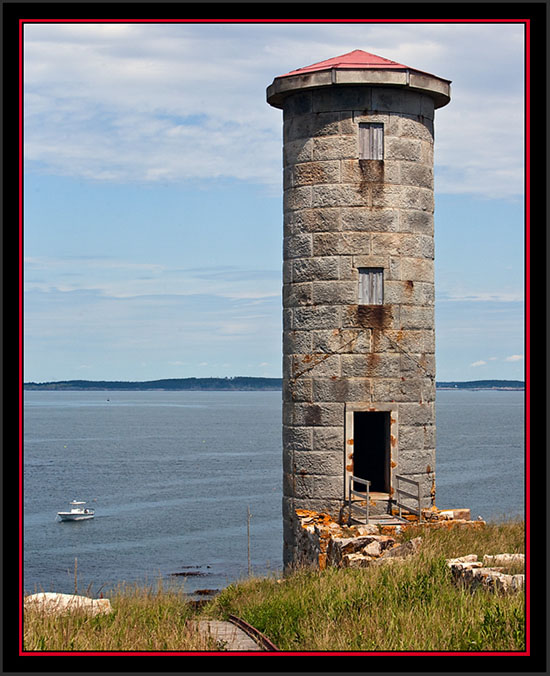
|
The Audubon Staff - Matinicus Rock
Team Leaders - Nathan Banfield and Caroline Poli
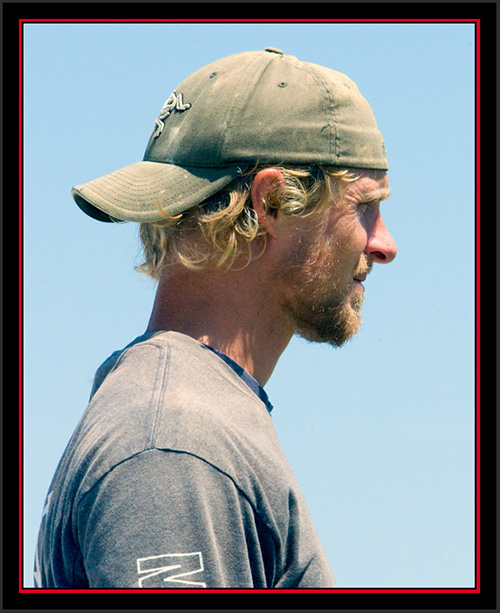
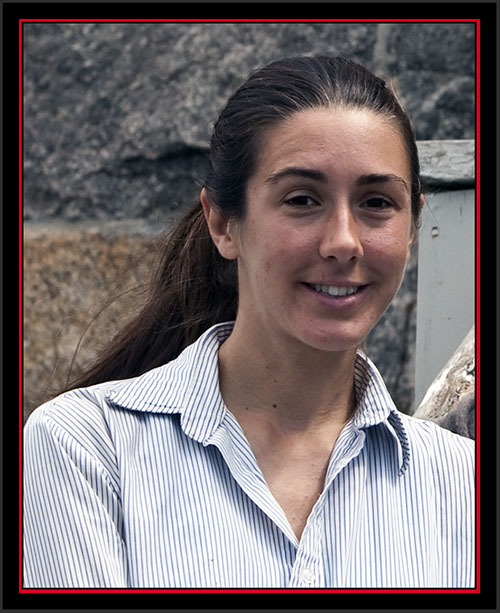
|
Seabird Technicians - David Vonk and Caitlin Hume


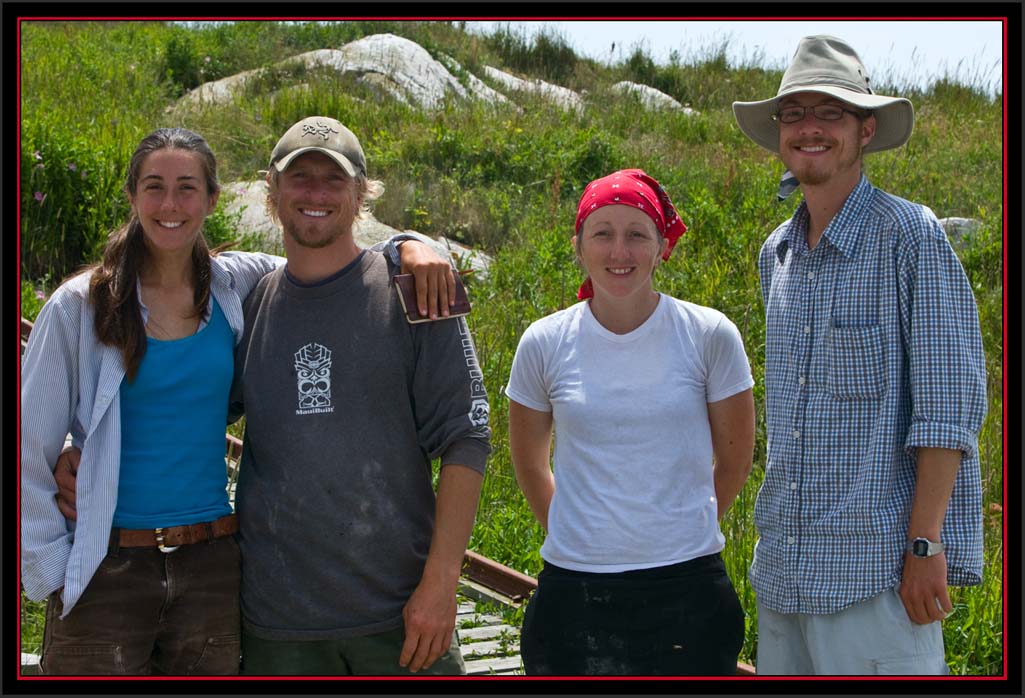
|
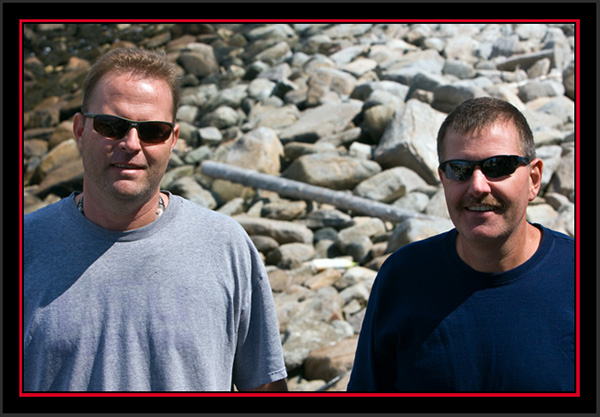
|
The NOAA crew wasted no time and immediately went up into the lighthouse to investigate the proposed weather station changes. They remained on the lighthouse walkway nearly the entire time we spent on
the island. One was from Louisiana, the other from Alabama I learned and we talked about what they thought of Maine. They had flown into Portland about 02:30 in the morning and planned to meet us at
08:30 in Rockland – they were operating with little sleep. Later I asked them about working on the lighthouse walkway. They indicated it wasn’t too bad except for where the series of handrails is missing. The
walkway isn’t all that large when walking around the structure. Having been constructed in 1857 it’s unlikely anything about this would meet current construction codes…
The NOAA Crew...Canon EOS Mark III 1Ds, 1/800 second at 73mm; EF70~200mm f/2.8L at f/10, ISO 640 |
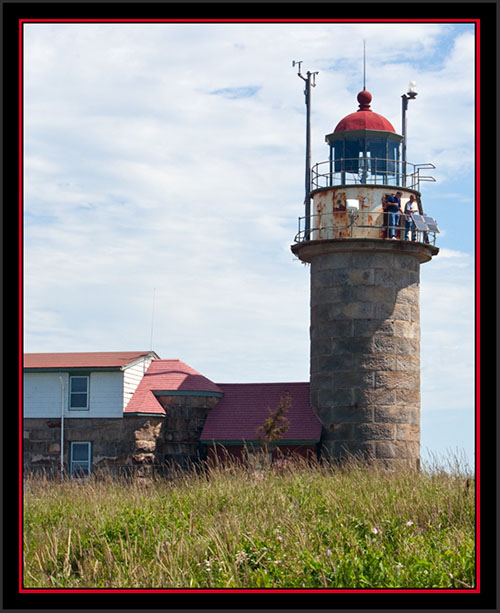
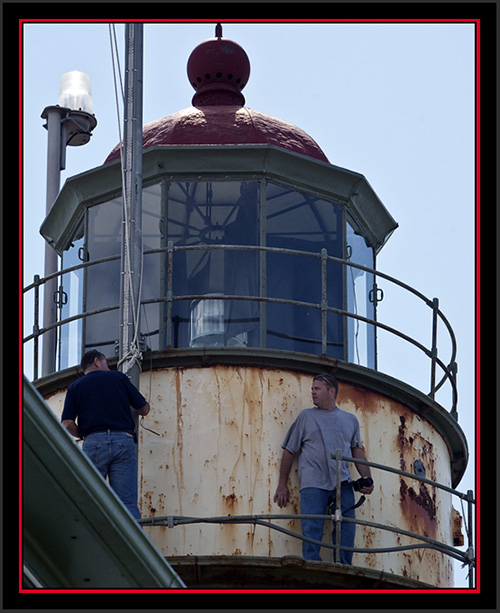
|
|
As stated, there were photographic opportunities all around me. I didn’t have to go anywhere or even move from my present position to obtain good exposures, but I did speak with Brian about what he’d like to see happen. He’d mentioned
the possibility of a storm moving through the area and we had this in mind when the day was planned. Brian was going to stay in contact with the shore personnel, who would be using radar to monitor the storm’s movement. There was a
chance we’d pull out quickly and I didn’t wish to lose any time in the event we needed to cut the visit short.
Today was one of the few times I didn’t add the 1.4X extender to my 600 millimeter lens, which would have allowed the lens to be used at 840mm for more reach and greater image scale. You lose one stop of light using a 1.4X, which can prove problematic in lowlight conditions. For example, my 600mm lens is at f/4 shot wide open. Adding the extender takes it to f/5.6 – one stop slower which reduces shutter speed. This can be adjusted somewhat by increasing the ISO rating, but you’d only want to do this to a point to prevent introducing undo noise into the exposure, like when photographing birds on the wing overhead in strongly backlit conditions. This depends much on your camera model and how it handles noise. It pays to be familiar with your equipment so you’ll understand the thresholds and what you can accomplish. I had my flash extender mounted on my tripod system and a 5d camera/400mm f/5.6L lens combination hanging at my side for handheld applications. Atlantic Puffin - Maine Coastal Islands National Wildlife RefugeCanon EOS Mark III 1Ds, 1/1250 second at 600mm; EF 600mm f/4L at f/9, ISO 640 |
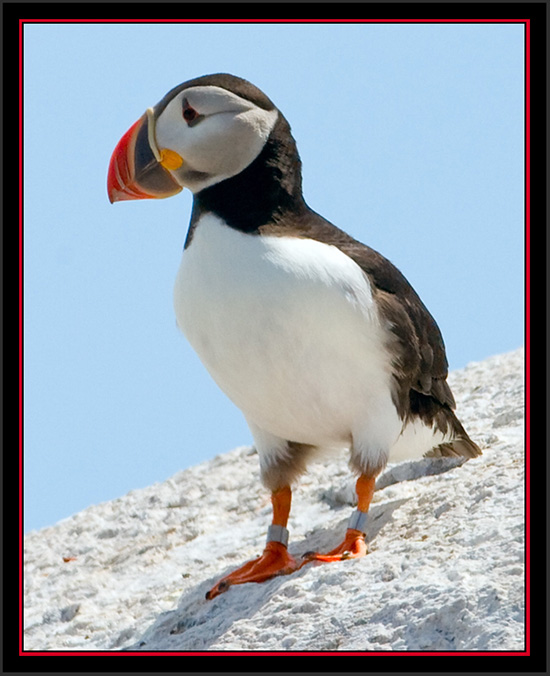
|
Matinicus Rock Image Sampler - Maine Coastal Islands National Wildlife Refuge
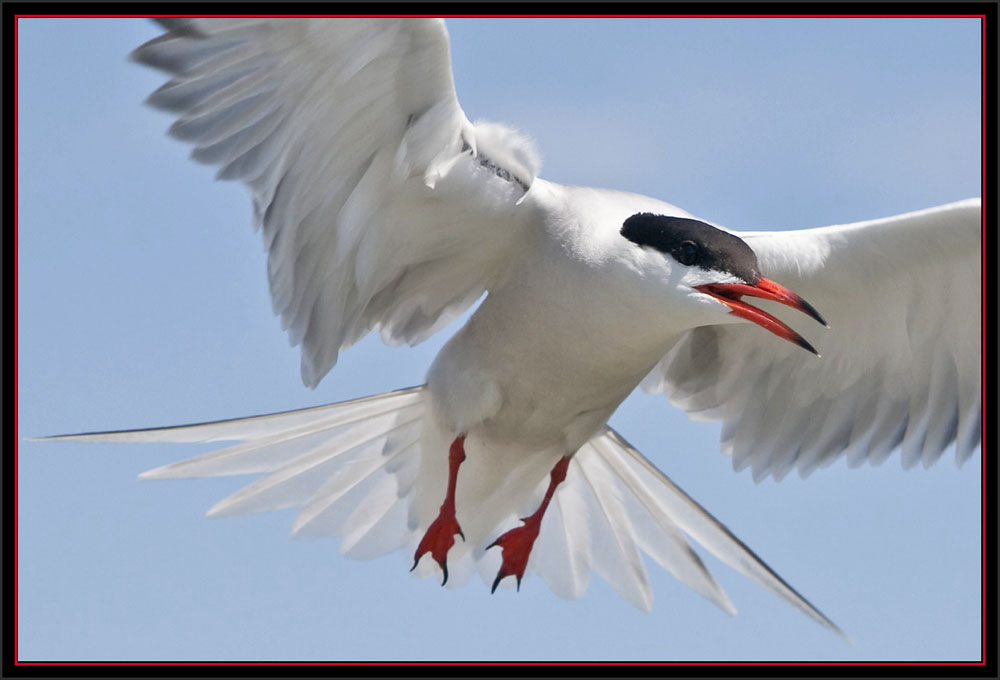
|
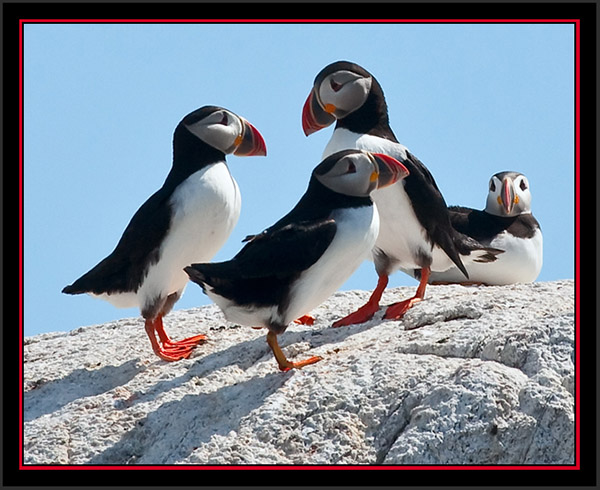

|
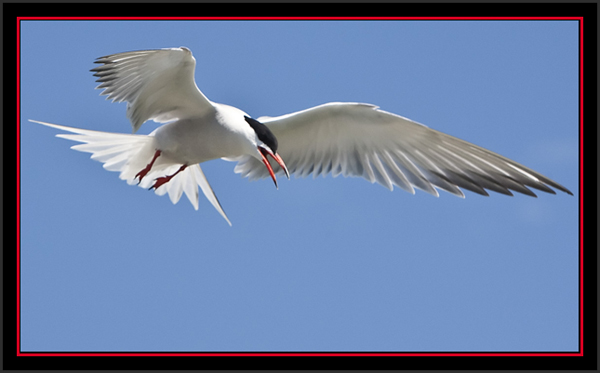
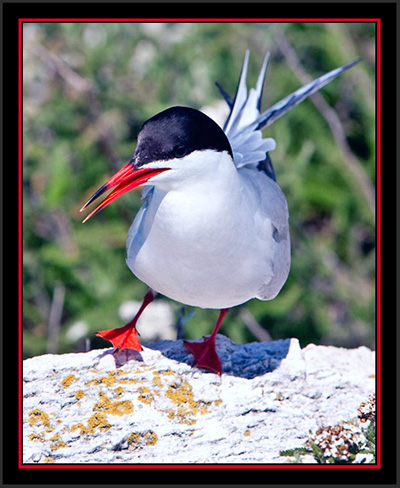
|
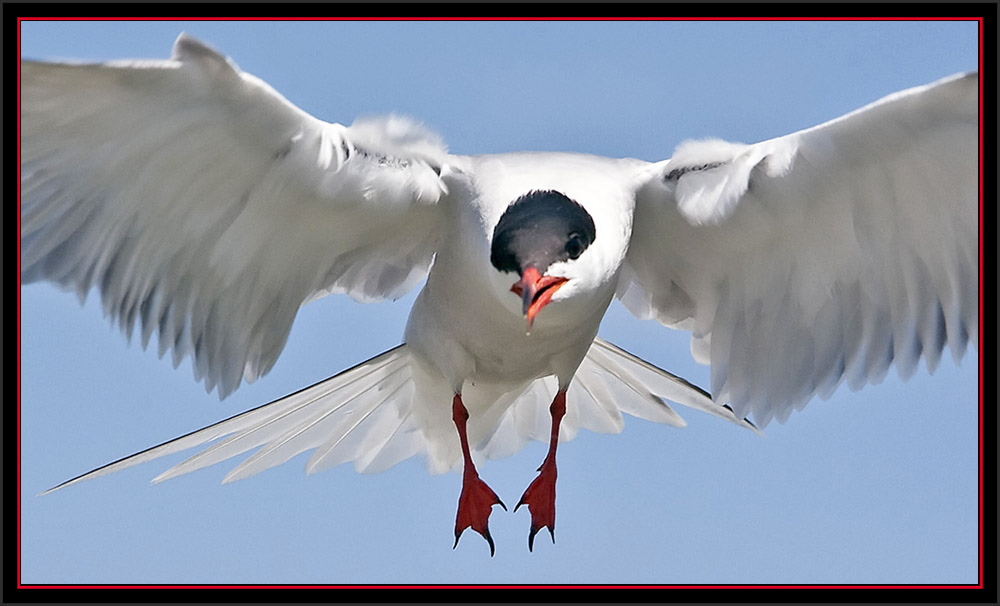
|
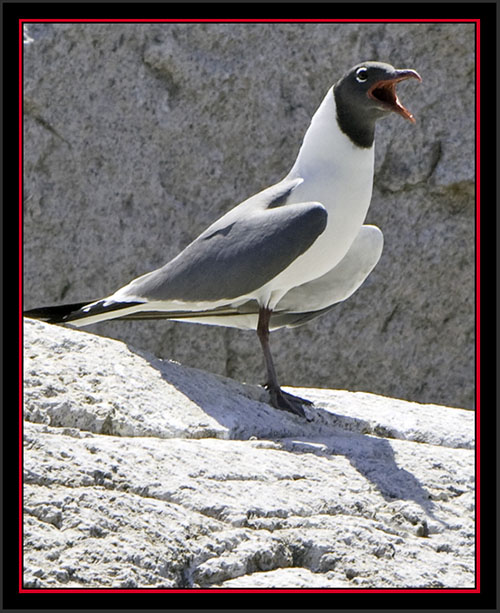
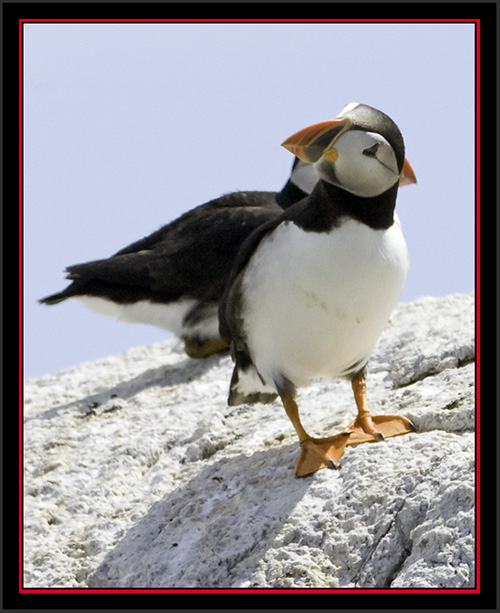
|
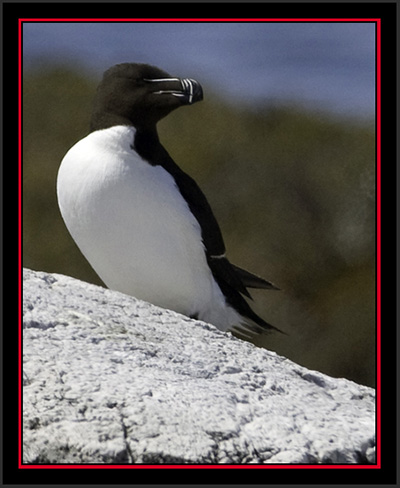
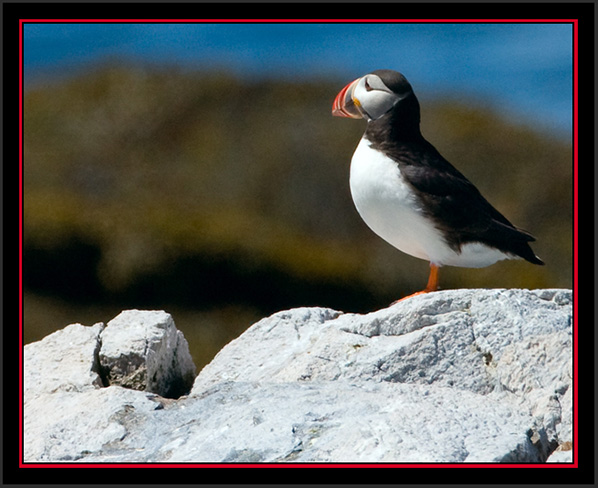
|
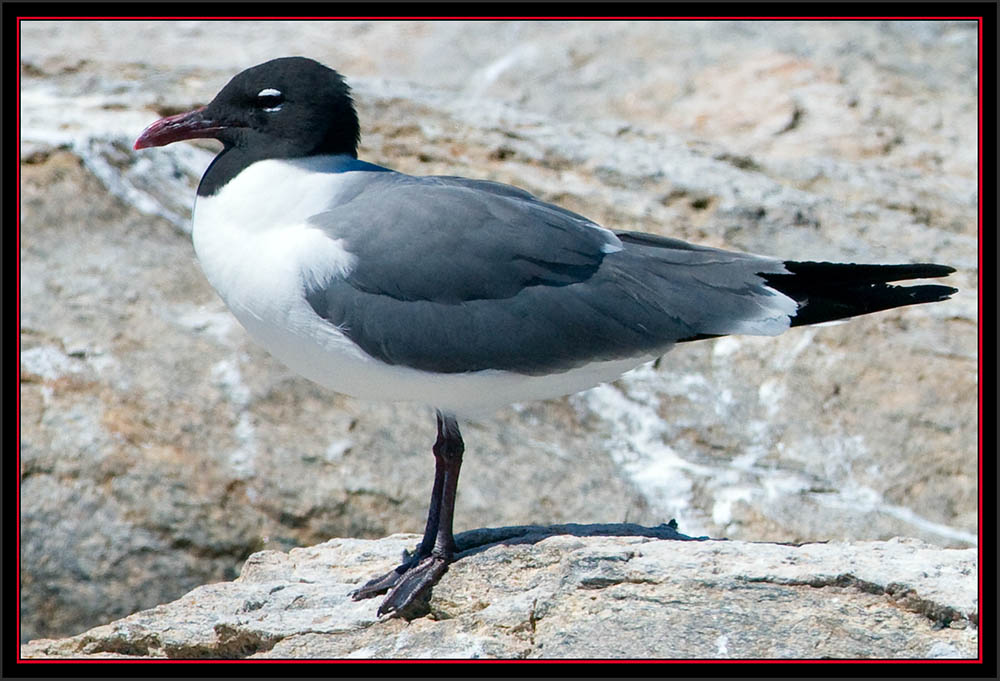
|
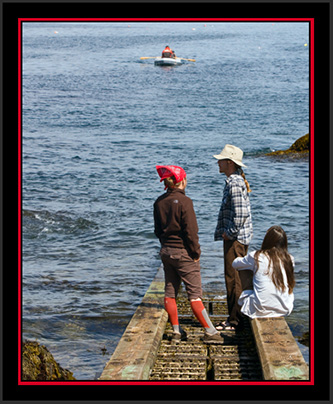
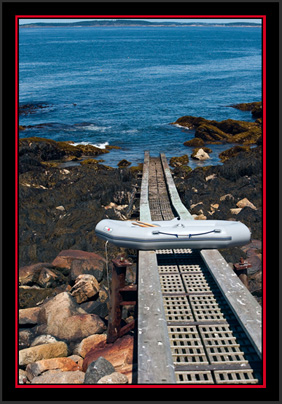
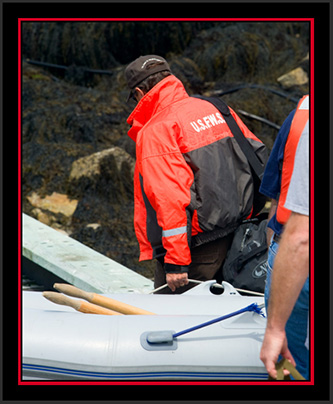
|
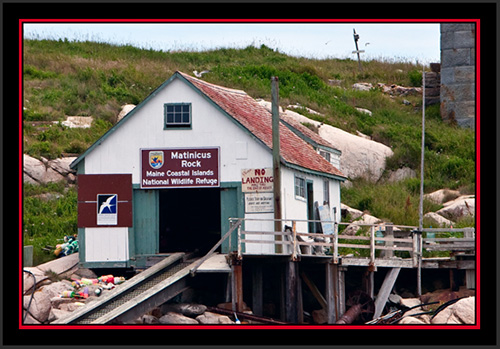

|
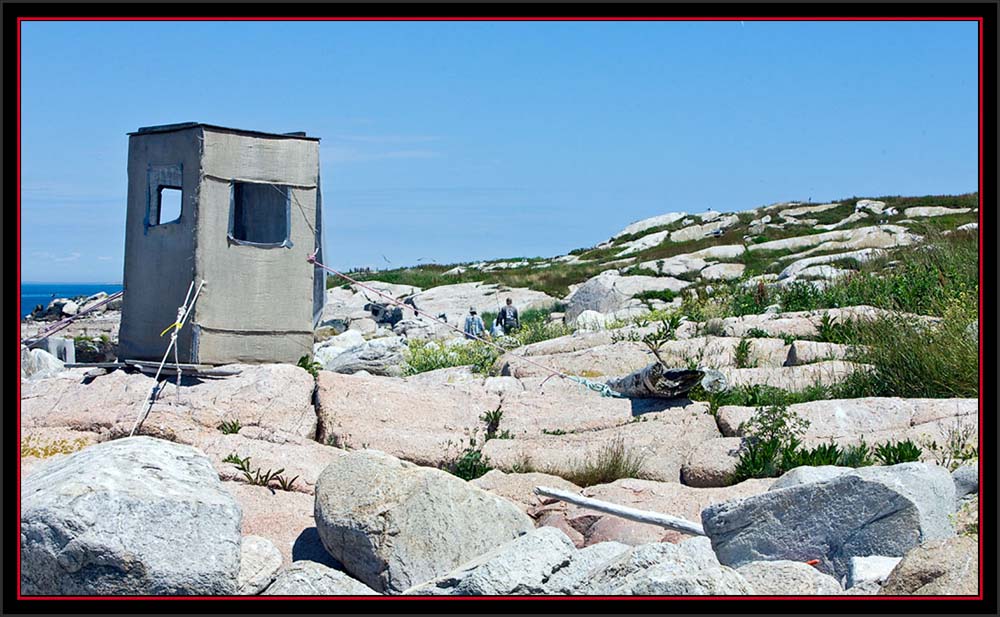
|
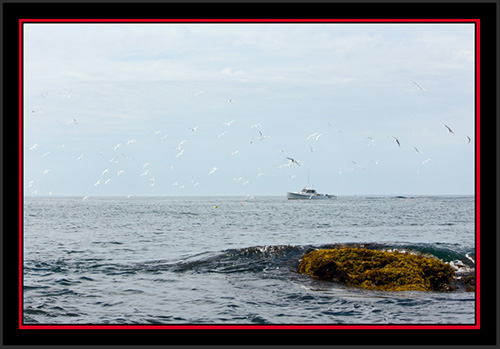
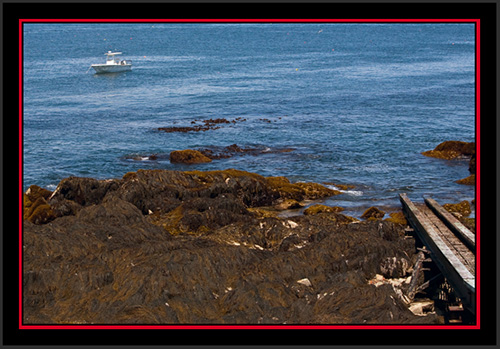
|
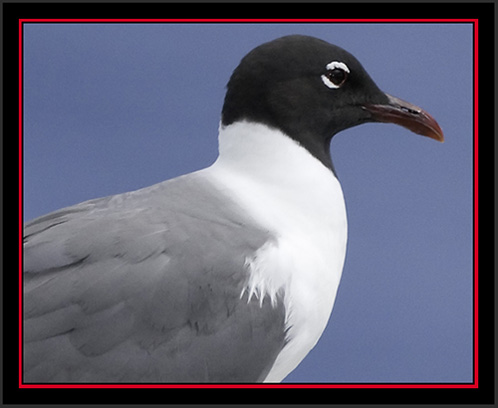
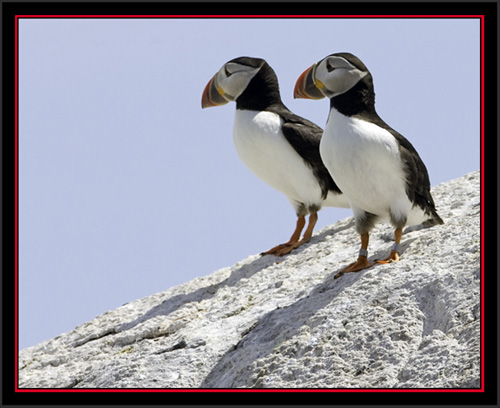
|
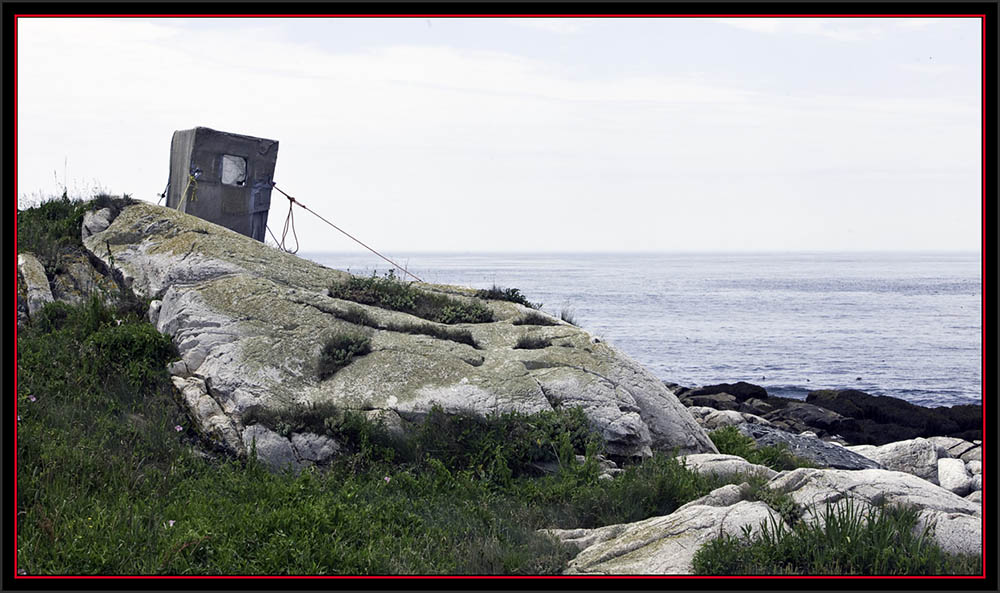
|
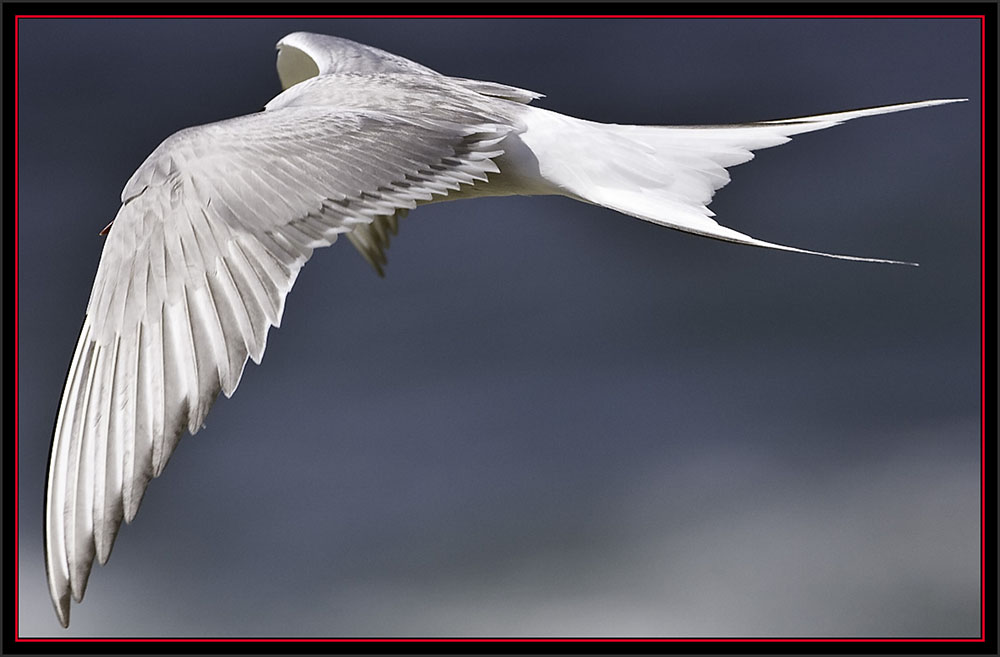
|
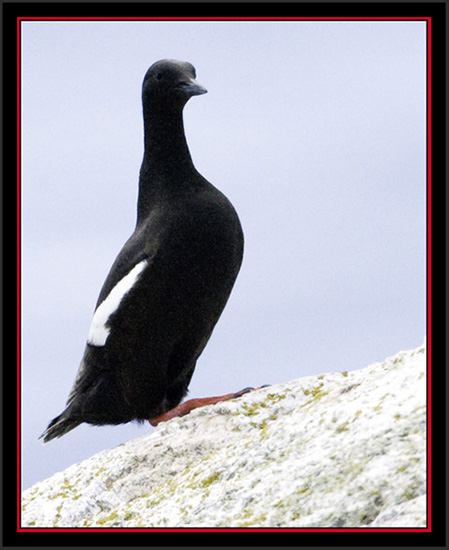
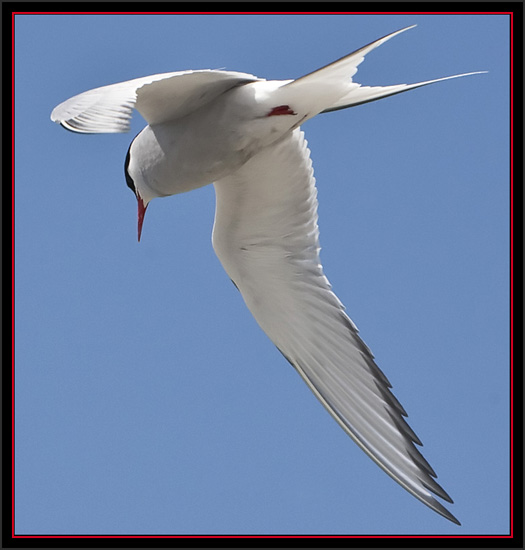
|
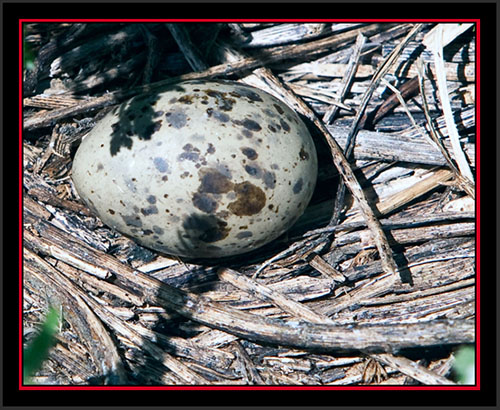
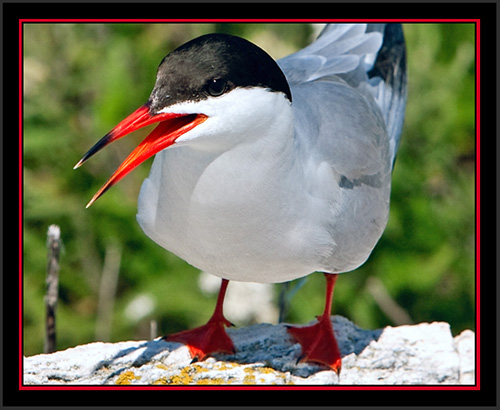
|
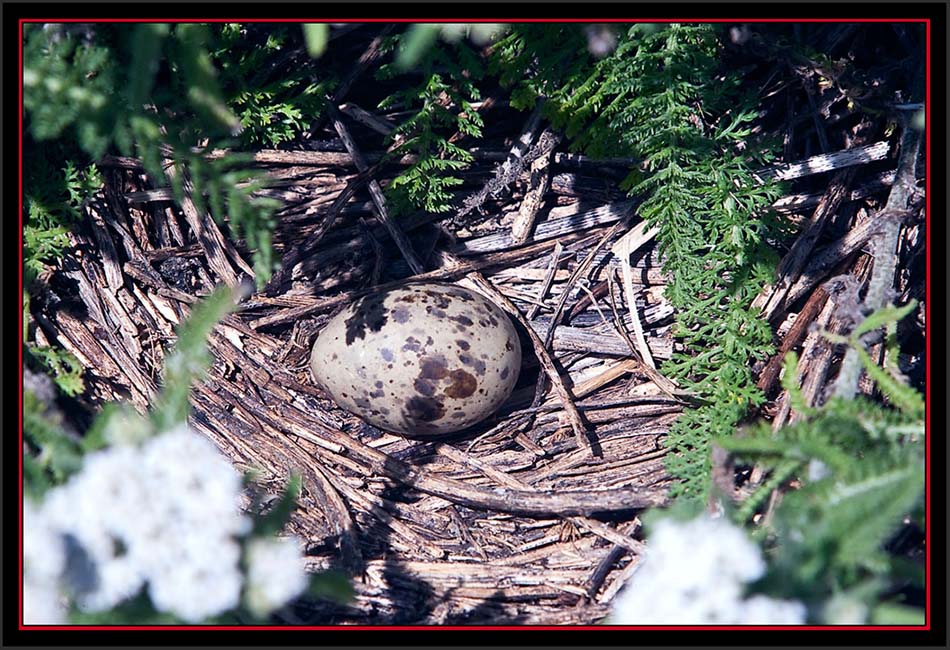
|
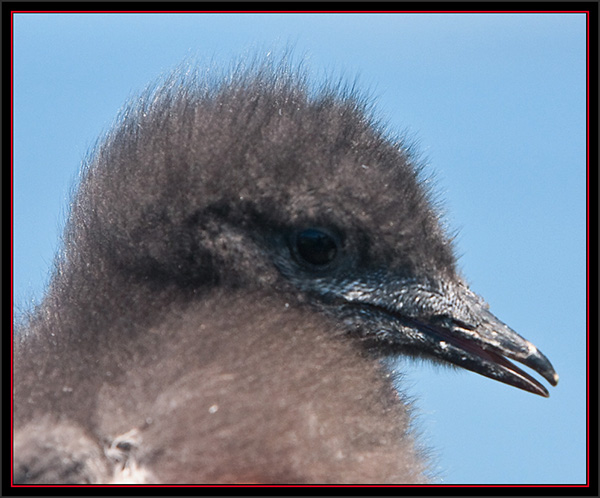
|
One task Beth Goettel, the Refuge Manager, and Brian wished me to pursue was photographing chicks and fledglings found on Matinicus Rock. I was in agreement with this and looked forward to it. Many
seabird chicks reside in crevasses in the most inaccessible ledge areas the parent birds can find, which of course makes sense for protection. Locating a chick to photograph can represent a chore. Attempting
to get an exposure of one ‘at home’ was not really feasible either, as they are often deep in the ledge. So we looked for chicks outside their holes and there were a few. In the end result, the Audubon staff
made this effort worthwhile. They knew where the little ones hung out whether in the ledge or hiding in the grass. After a time I ended up following the staff as they were seeking out chicks to weigh,
measure, etc., as part of what they do. I can state unequivocally that walking on rocks and ledge for several hours is a tiring effort – at least it was so for me, it had been an early morning. You’re
almost never on flat ground so it’s uncomfortable and also doesn’t lend itself to planting your feet with an eye in the viewfinder. I’ve found it’s good to have a guide along on these seabird islands to
prevent accidentally stepping where you shouldn’t, which could easily destroy a nest, eggs or chicks. The key here was to never walk in the grassy areas but always on rocks or ledge to avoid potential
destruction. I spent the balance of the time remaining doing this and was fairly well exhausted by the time we departed.
Black Guillemot Chick...Canon EOS 5d, 1/1250 second at 200mm; EF70~200mm f/2.8L at f/7.1, ISO 640 |
|
Similar to what I’d found on Petit Manan Island, the various bird species each have their rookery section. There is overlap of course but the Arctic and Common Terns
for example, are near each other but somewhat segregated. We were working in an area with terns and Black Guillemots first and planned to get to where the
Atlantic Puffins resided afterwards. Some of this time Brian and I were on the wooden helicopter platform. This was quite a bit higher than the surrounding area making it a
terrific observation and photography platform. We observed the technicians going about their daily tasks – I found this experience quite interesting.
The Arctic Tern Fledgling at right was out in the open in bright sunlight long enough that I was able to take some exposures at varied focal stops in a quest to obtain detailed images… Arctic Tern Fledling - Maine Coastal Islands National Wildlife RefugeCanon EOS Mark III 1Ds, 1/250 second at 600mm; EF 600mm f/4L at f/18, ISO 640 |
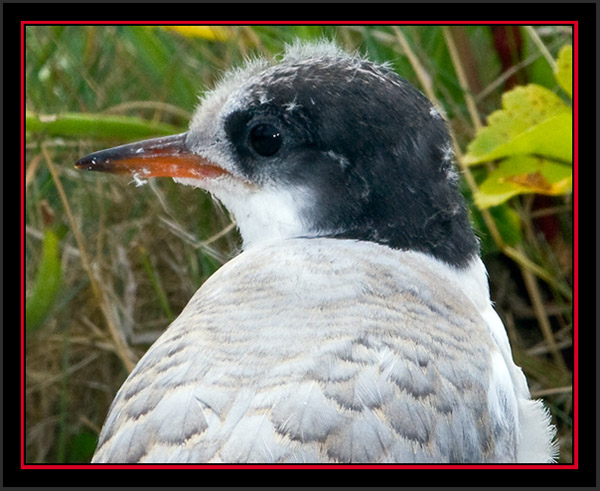
|
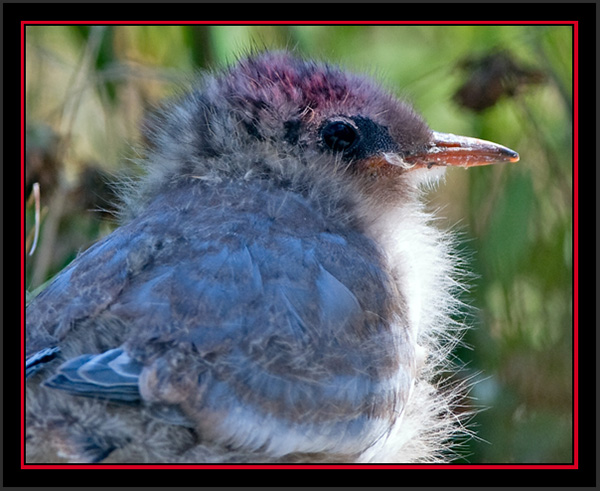
|
Brian pointed out the Arctic Tern chick viewed at left. I was on the boardwalk several feet above the ground. It didn’t take long to figure out this elevated walkway didn’t allow use of my tripod when
extended for rigidity. I could almost, but not quite open the legs to a locked position. This fact made spontaneous shots difficult because it required a few seconds to ascertain the tripod was stable before an
exposure was taken. The purpose of a tripod is to promote razor sharp images and if it’s not stable this may not happen. The chick was sitting on ledge so I asked if it were okay for me to get off the boardwalk
to properly spread the tripod. This was okay I found, provided I was careful where I stepped. There was a lot going on around me but I spent a few minutes photographing the chick.
Arctic tern Chick...Canon EOS Mark III 1Ds on tripod, 1/1800 second at 600mm; EF 600mm f/4L at f/7.1, ISO 640 |
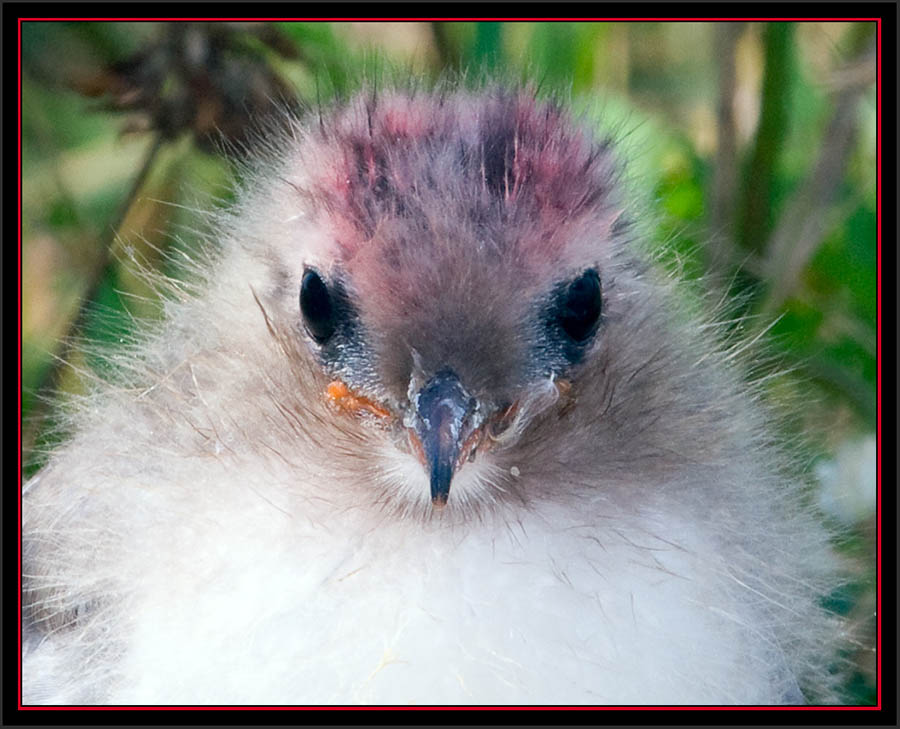
|
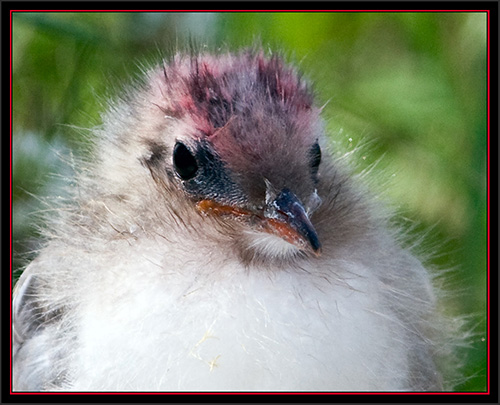
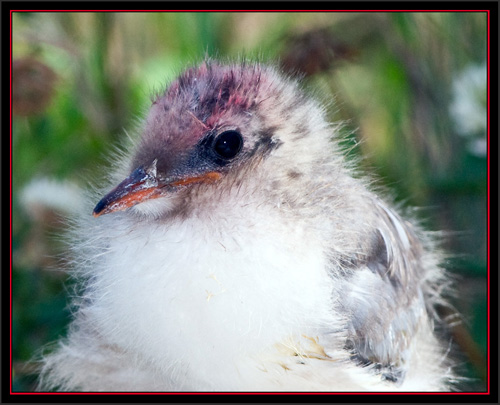
|
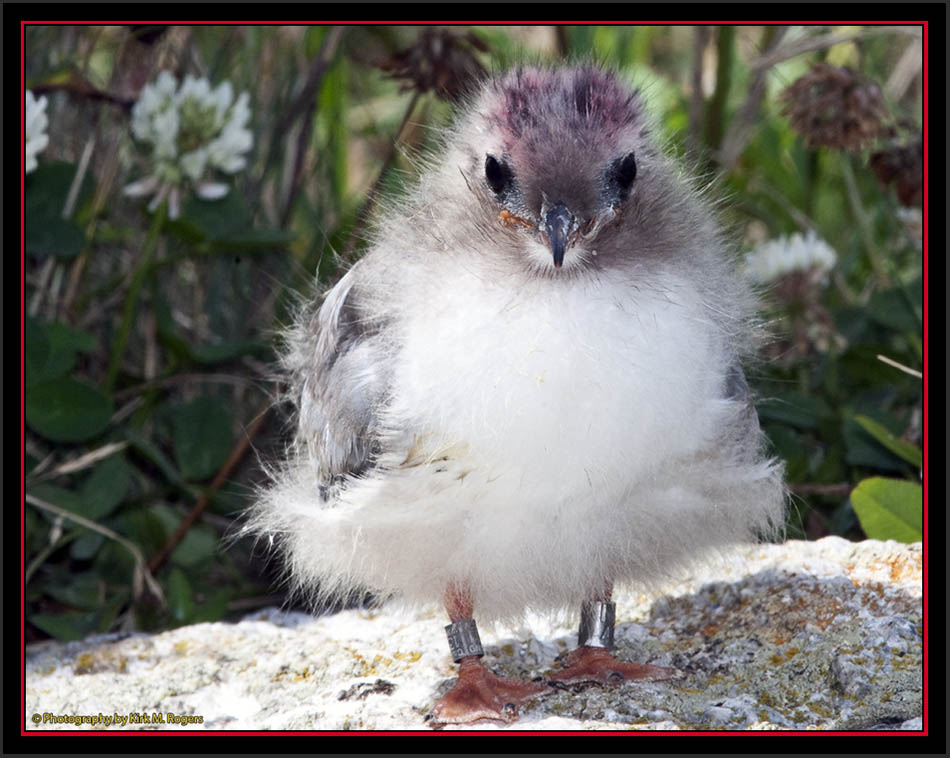
|
At right is another fledgling example… Again I believe this was an Arctic because the only adult birds around it were Arctic Terns. This bird was resting on top of a rock catching a few rays and appeared fairly
content. This allowed me to take multiple exposures before joining the Audubon staff elsewhere around the ledge to look for chicks.
Arctic Tern Fledling - Maine Coastal Islands National Wildlife RefugeCanon EOS Mark III 1Ds on tripod, 1/1800 second at 600mm; EF 600mm f/4L at f/7.1, ISO 640 |
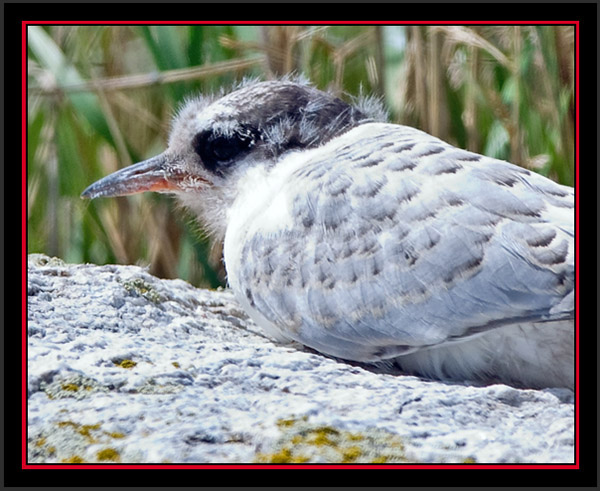
|
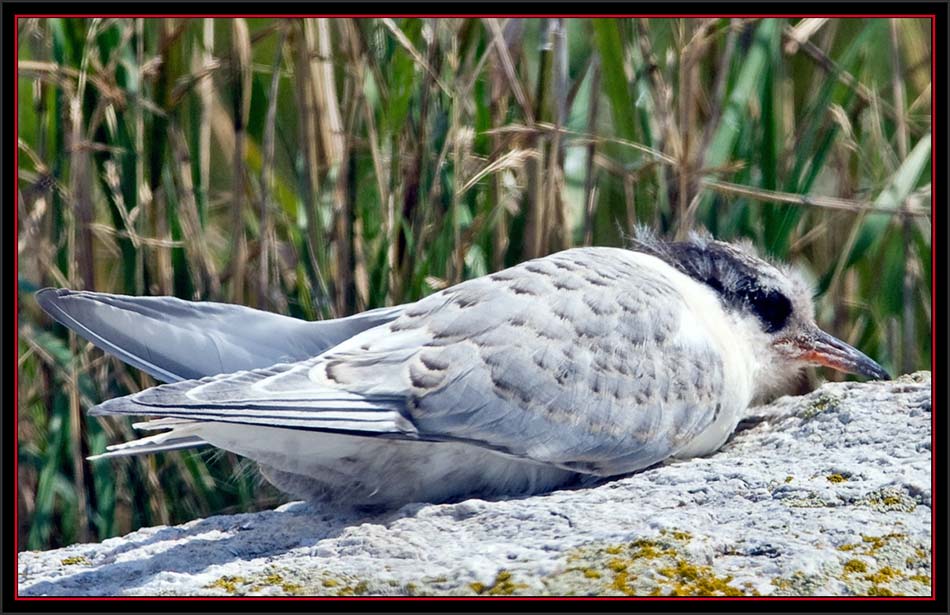
|
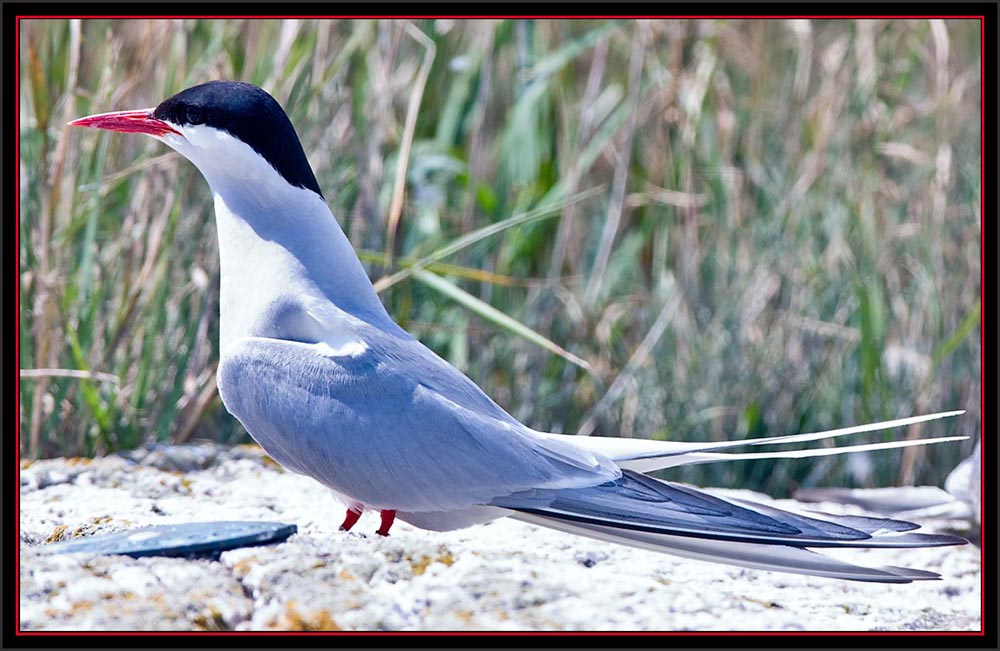
|
A Few More Chick Images - Matinicus Rock - Maine Coastal Islands National Wildlife Refuge
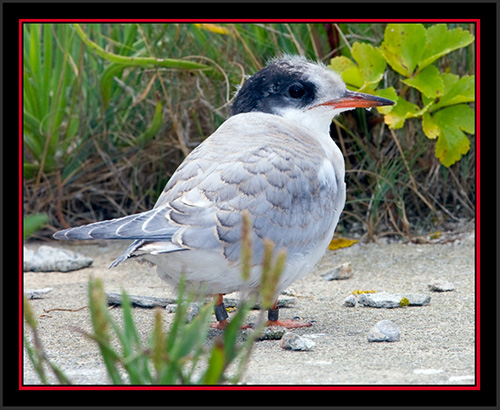
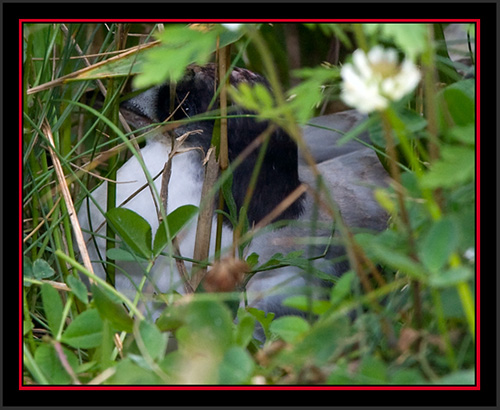
|
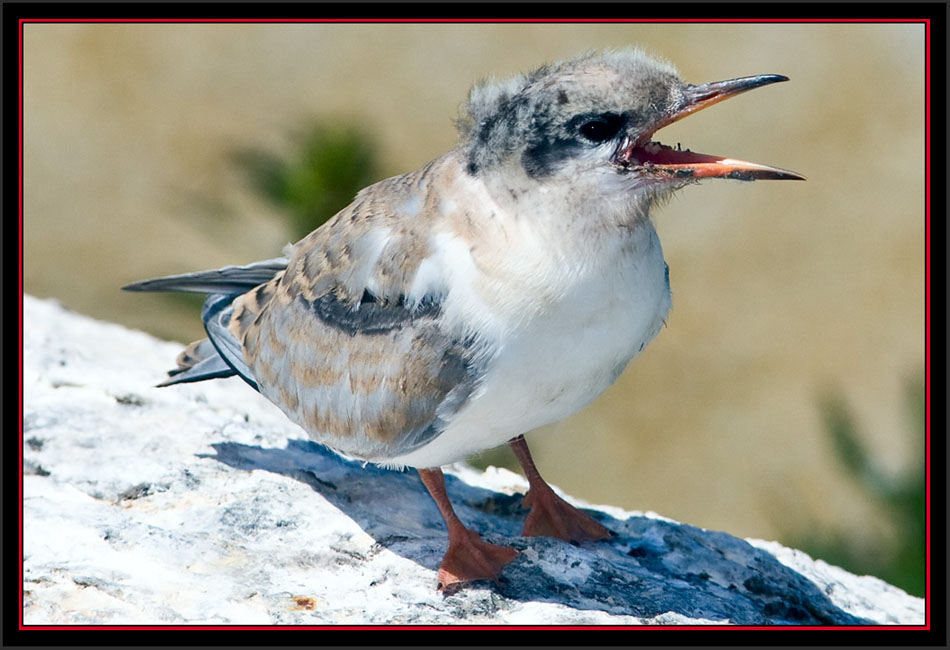
|
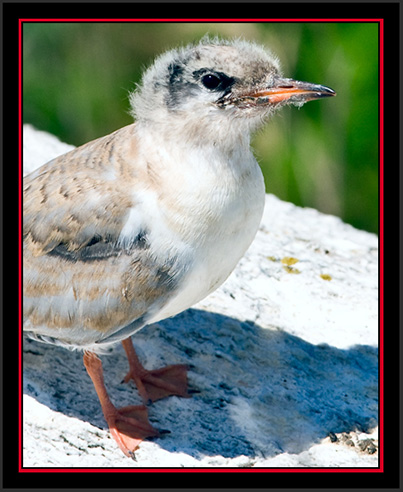
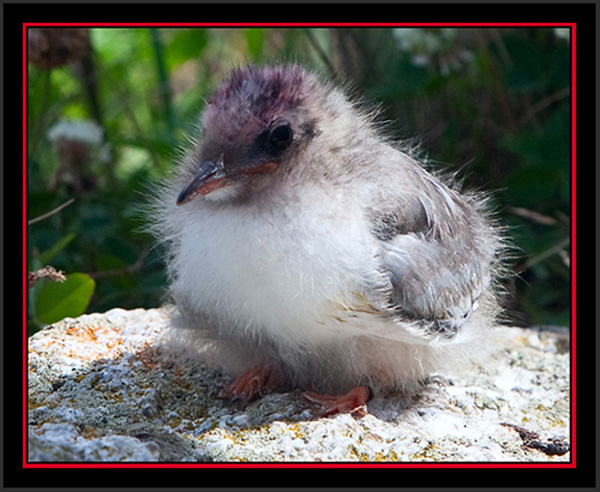
|
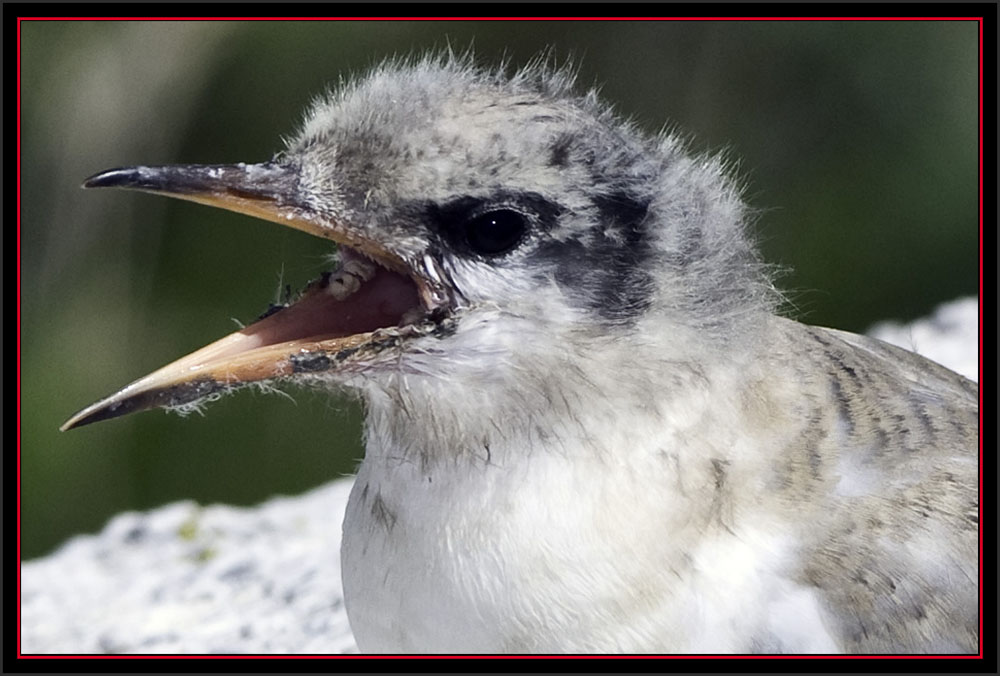
|
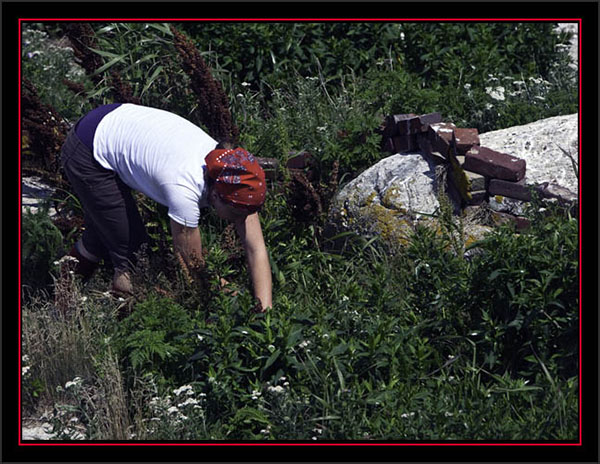
|
I went along with the staff as they searched for chicks staying on the rocks and out of the grass wherever possible. They’d set up a small area on ledge surrounded by
bricks to serve as a pen. The wall wasn’t high, two bricks laid flat, but the chicks weren’t able to jump over it yet so it worked well for the few minutes the staff required
to do their checks. We were still in the tern part of the rookery and these chicks can be found hiding in the grass.
Caitlin Seeking Tern Chicks...Canon EOS 5d, 1/2000 second at 200mm; EF 70~200mm f/2.8L at f/10, ISO 640 |
Seeking Chicks - Matinicus Rock - Maine Coastal Islands National Wildlife Refuge

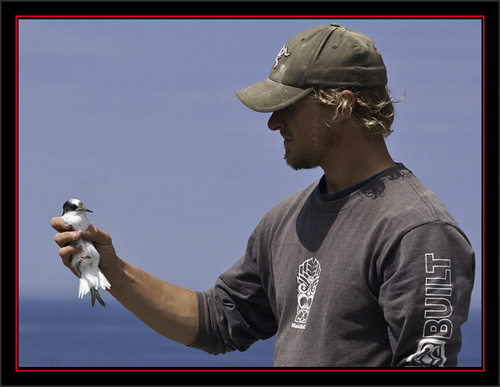
|
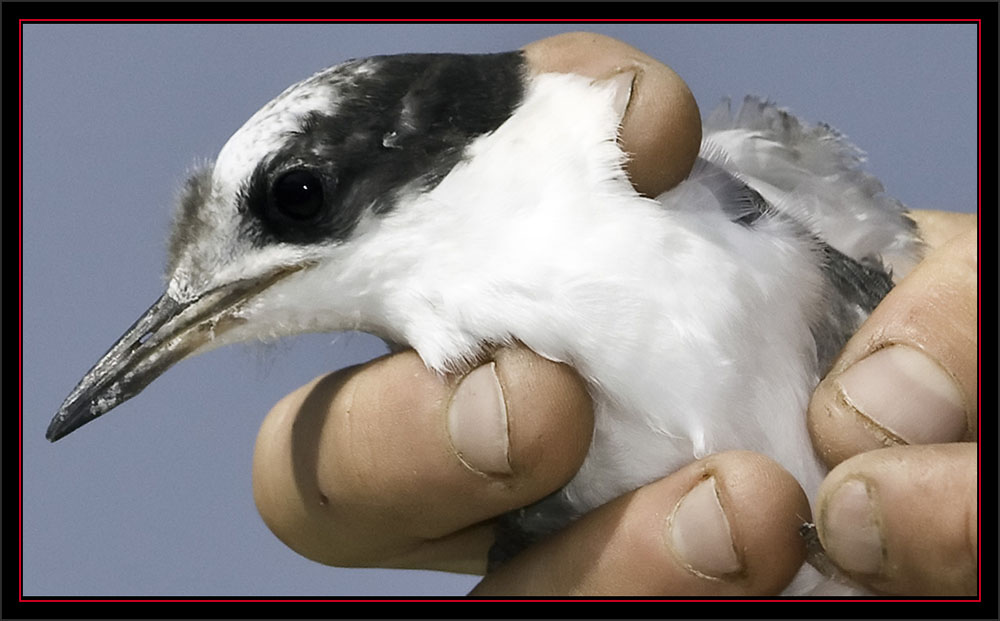
|
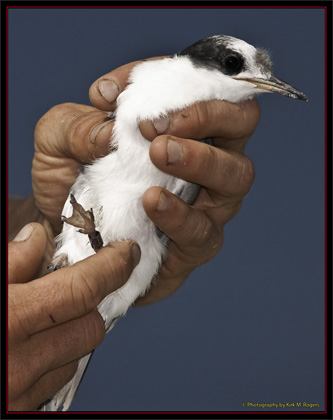
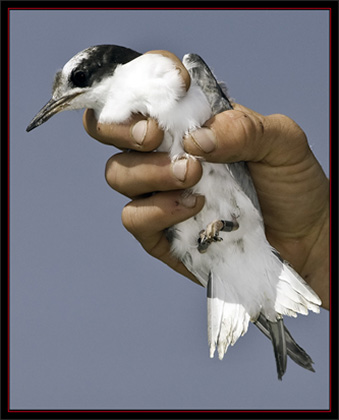
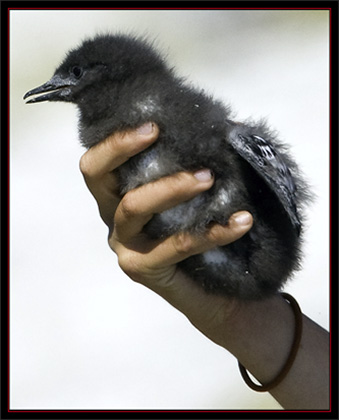
|
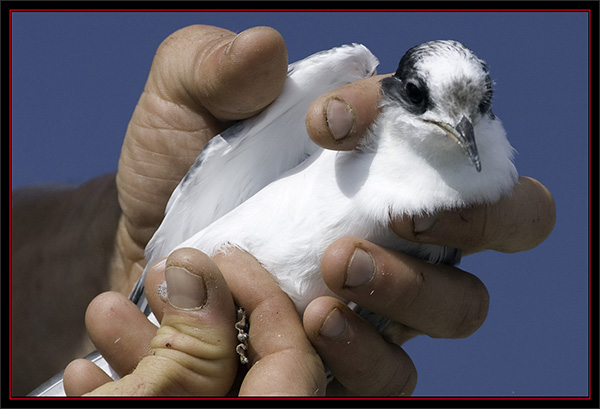
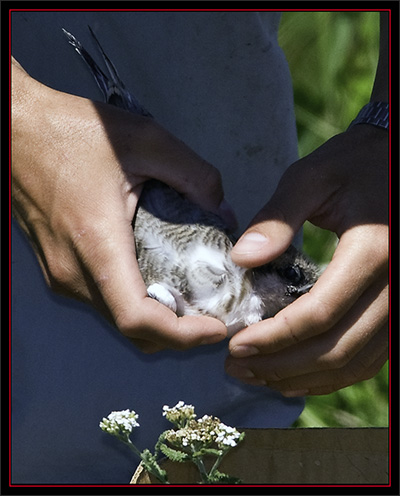
|
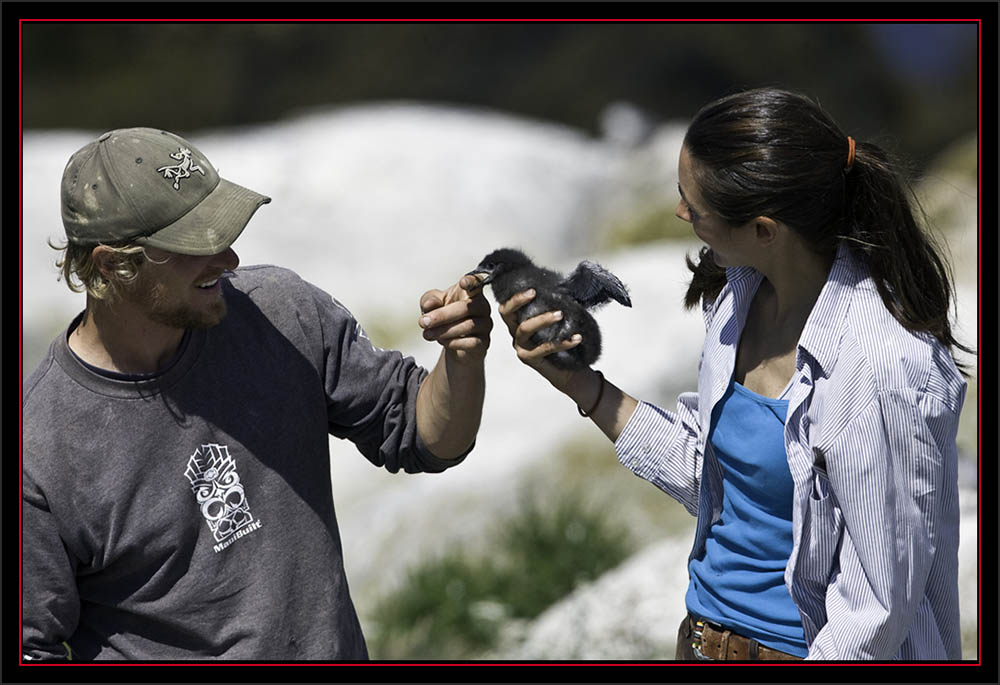
|

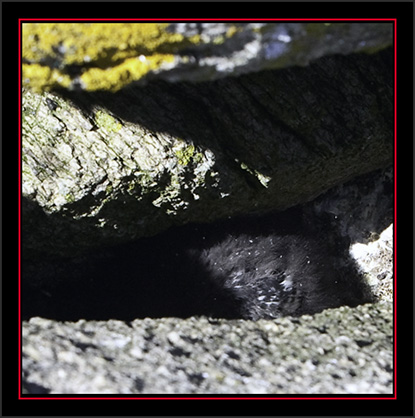
|
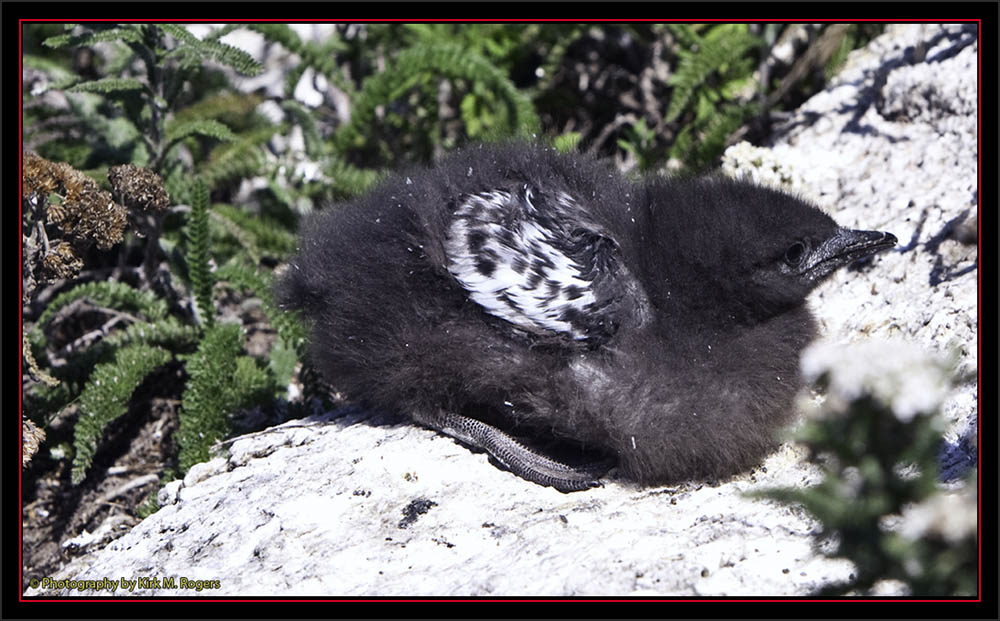
|
|
After a time in the tern rookery the team decided to get on the other side of the boat ramp into the vertical ledge area. I took some more exposures, which delayed my
departure, and then walked back to the boathouse with my tripod. I spoke with Caitlin before she followed the others climbing down to the rocks beneath the boat ramp. She
indicated it wouldn’t be wise to carry a tripod where they were going. Looking down, I was in absolute agreement… I made a few quick equipment adjustments and climbed down
to join the group.
By now it was quite warm and I found this part of the morning a bit difficult. Climbing up and down the ledge was trying. It also added another element to the photographic tasks as one has to achieve some semblance of balance when the camera goes up and the eye is placed in the viewfinder. It wouldn’t do to topple off a perch when using the camera… Arctic Tern Fledling - Maine Coastal Islands National Wildlife RefugeCanon EOS Mark III 1Ds, 1/1600 second at 600mm; EF 600mm f/4L at f/8, ISO 640 |
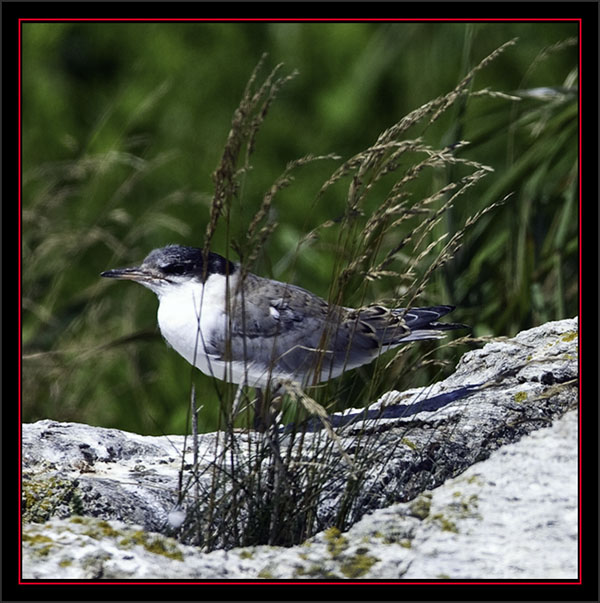
|
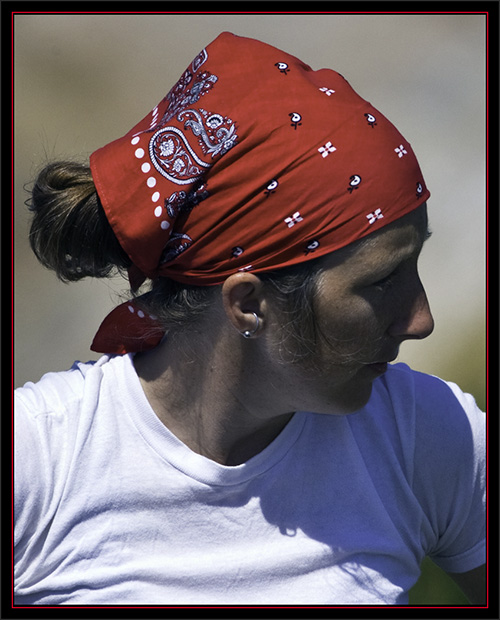
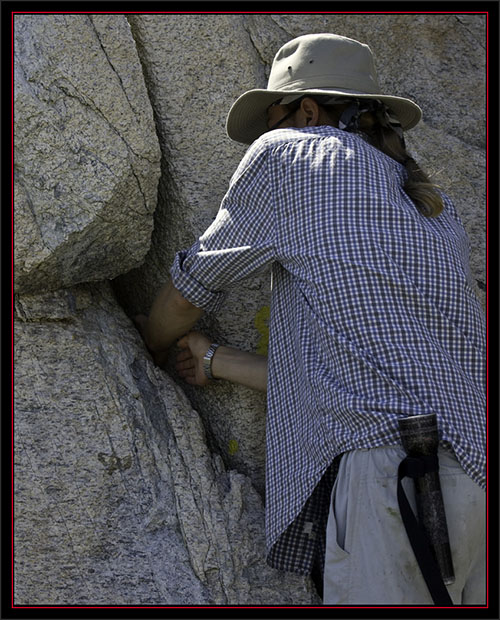
|
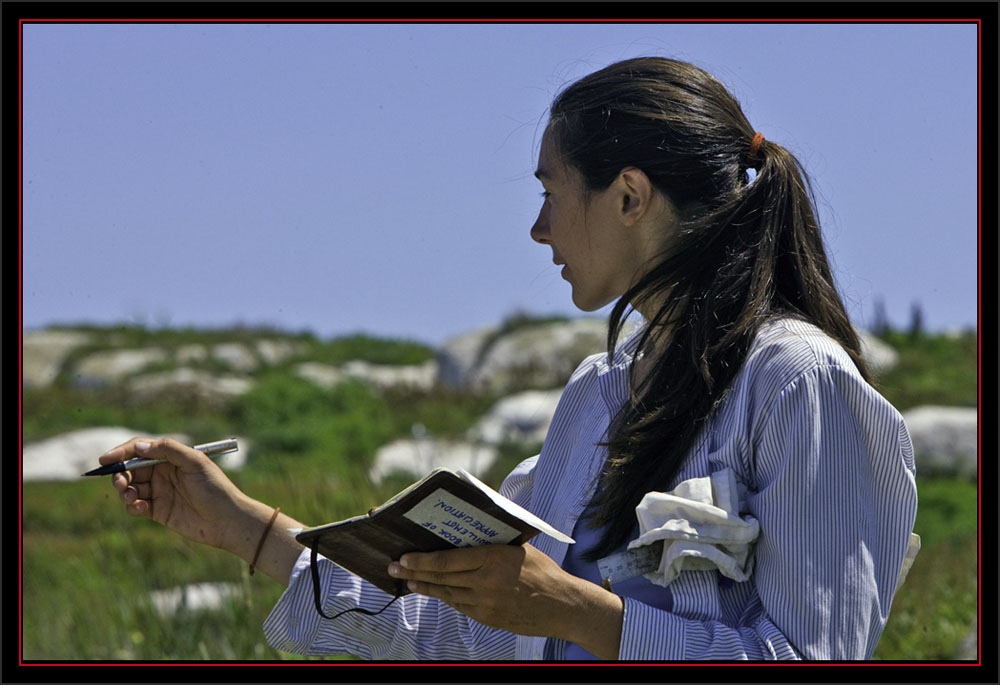
|
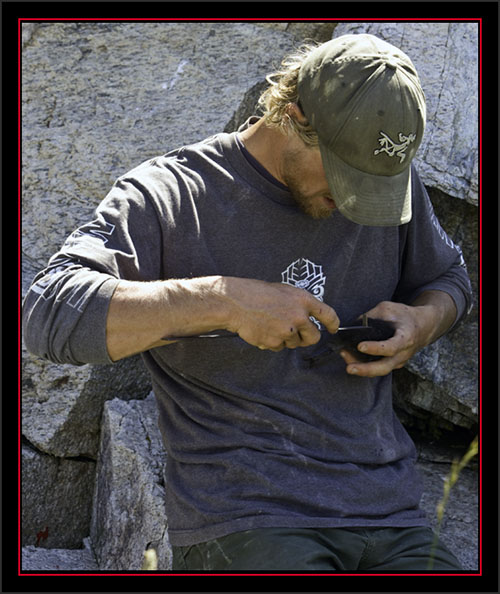
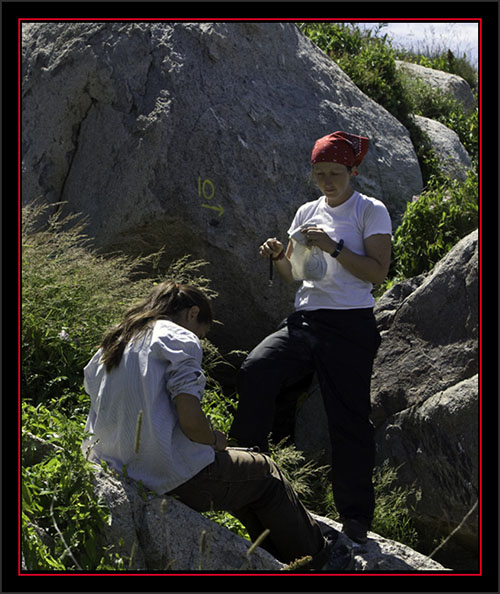
|
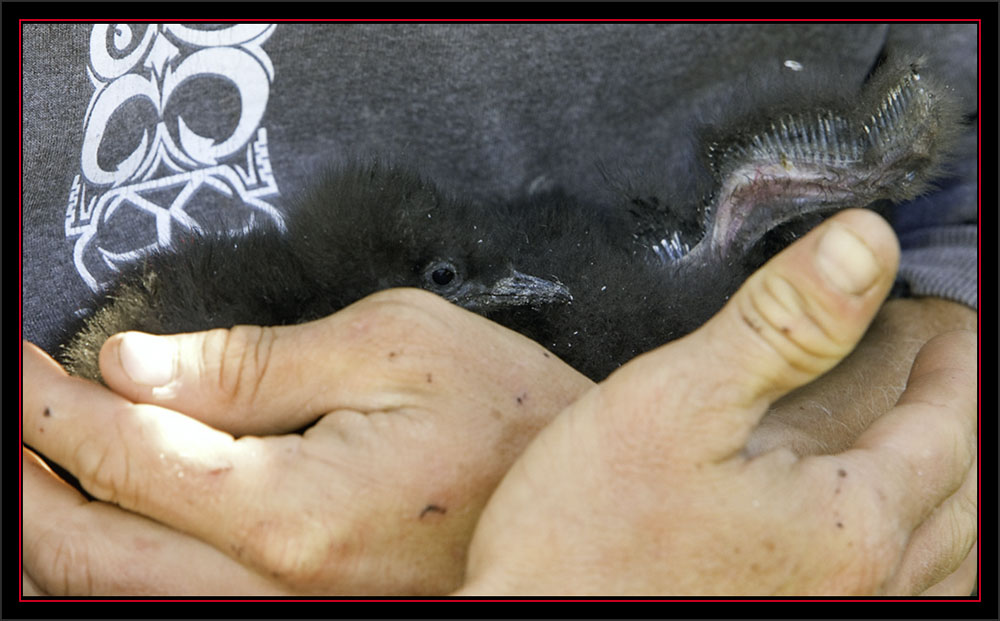
|
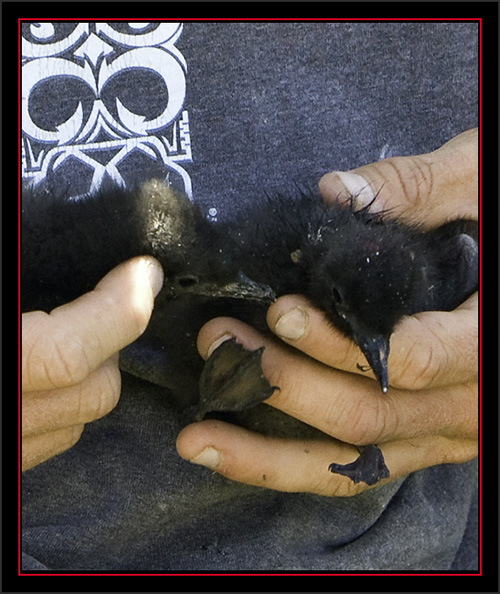
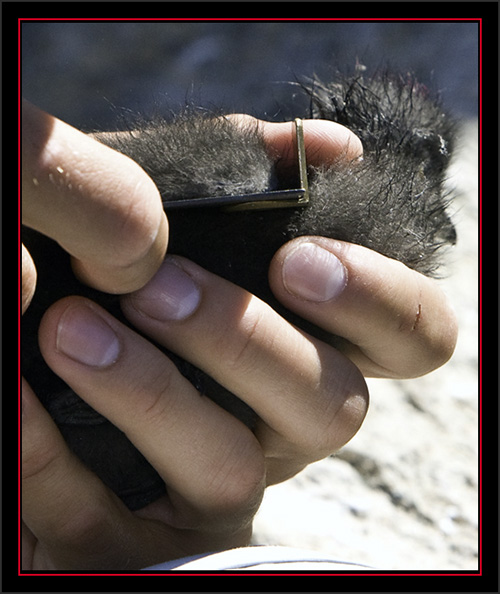
|
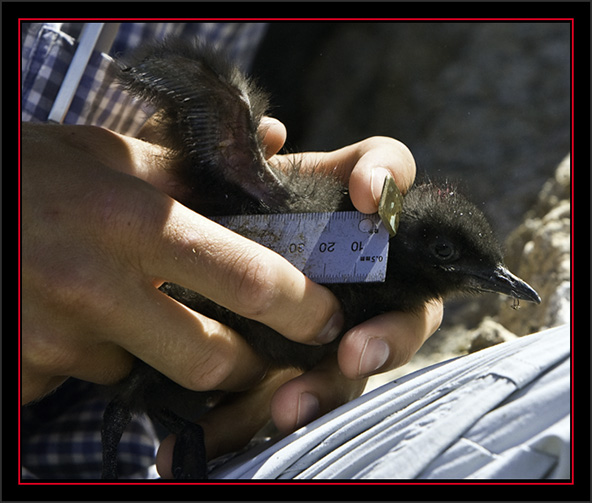
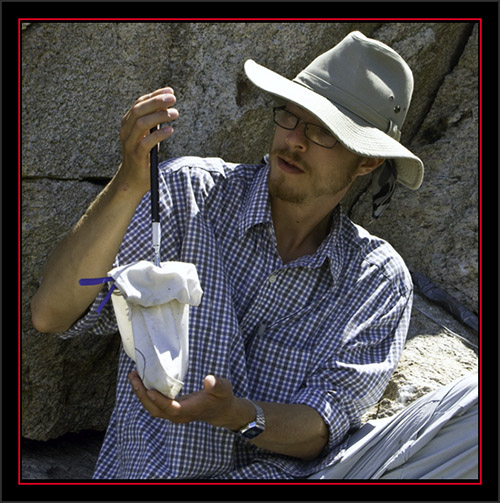
|
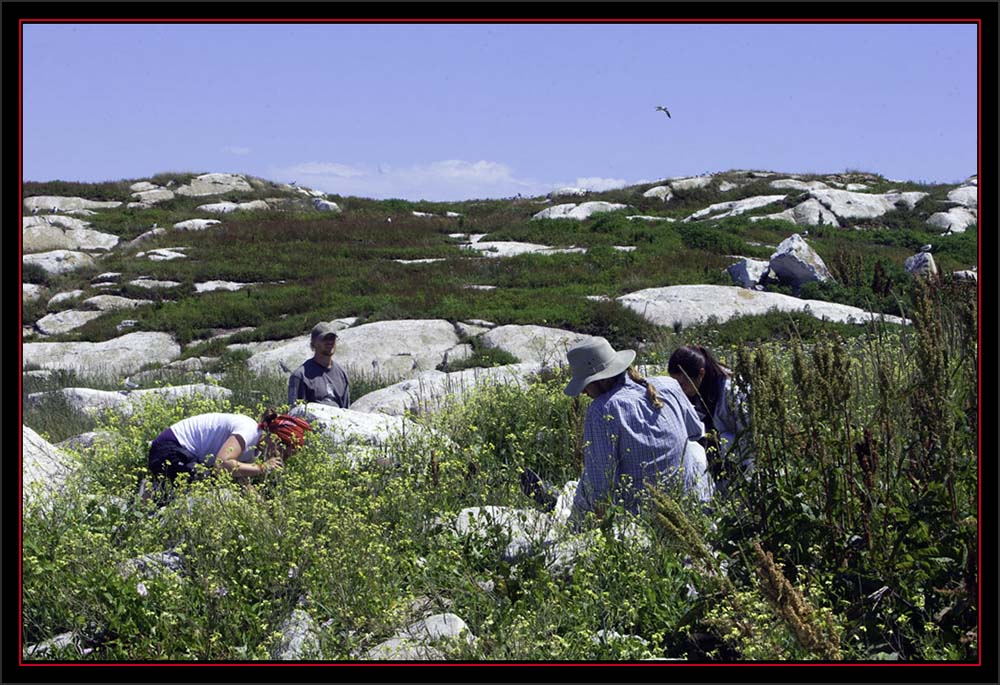
|
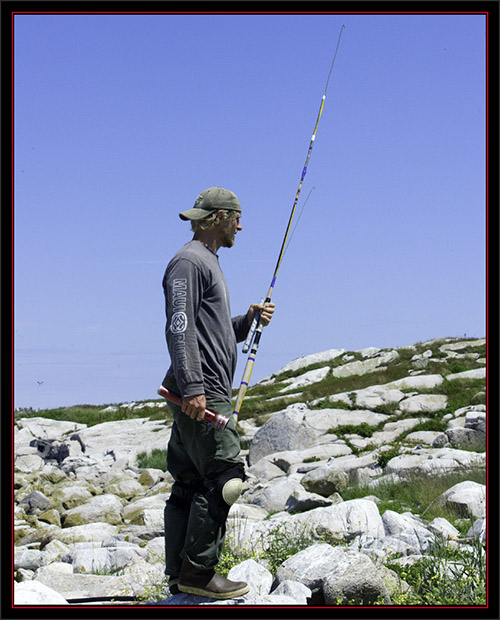
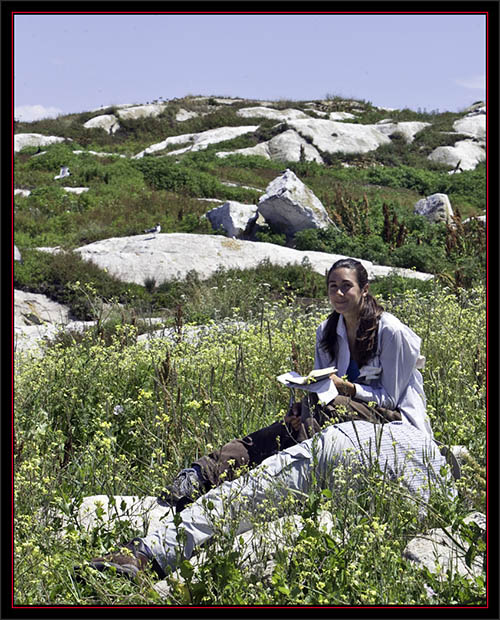
|
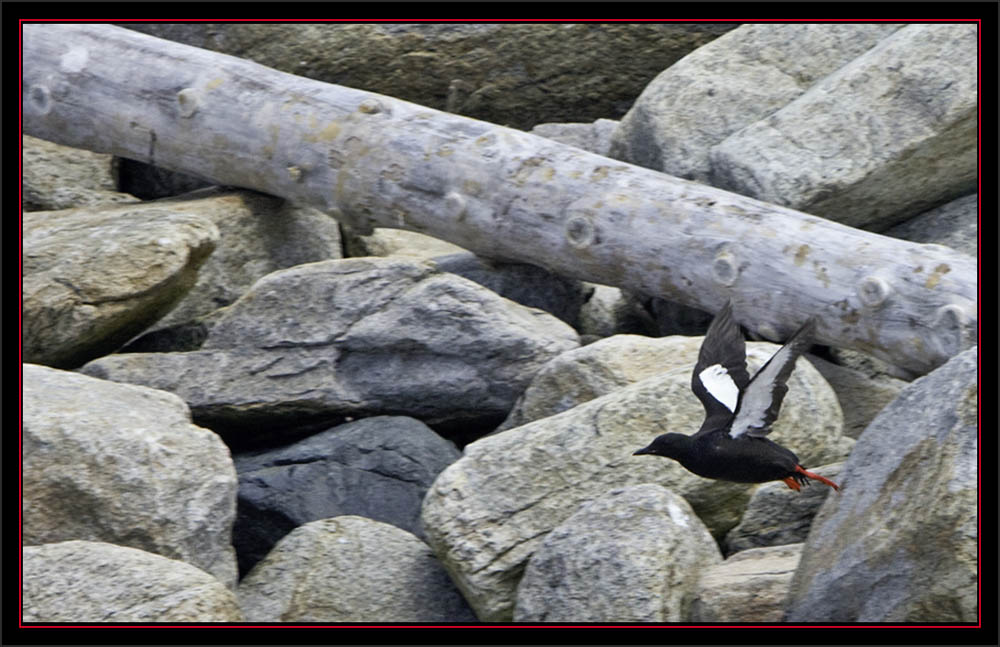
|
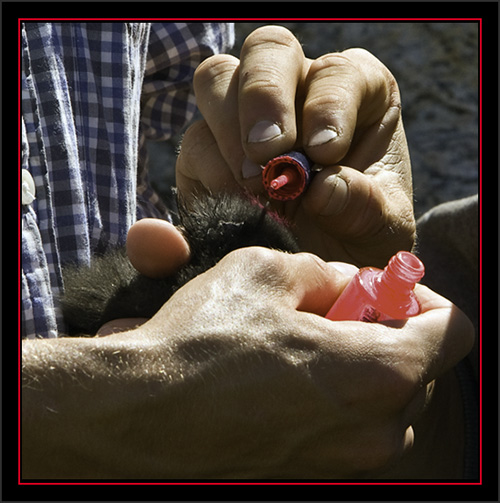
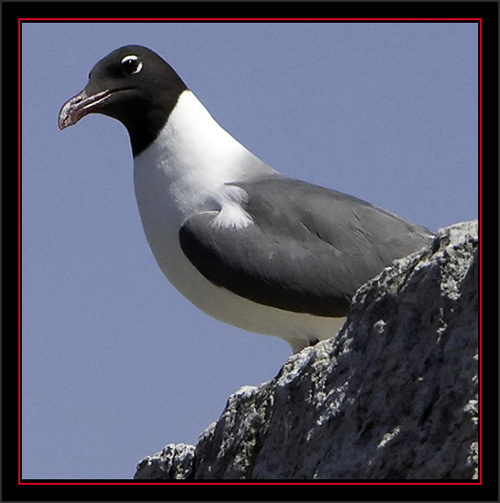
|
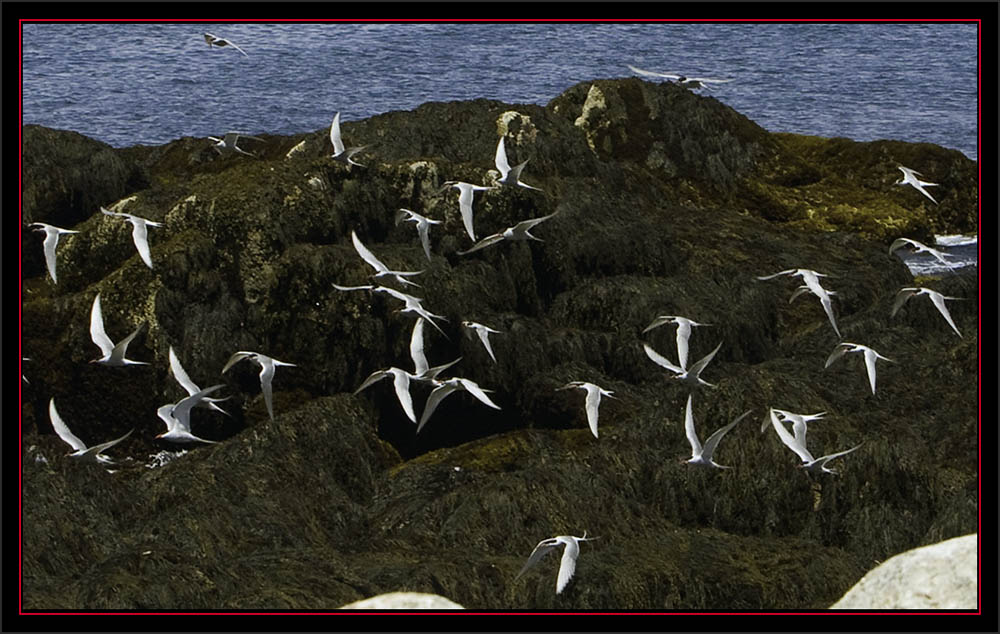
|
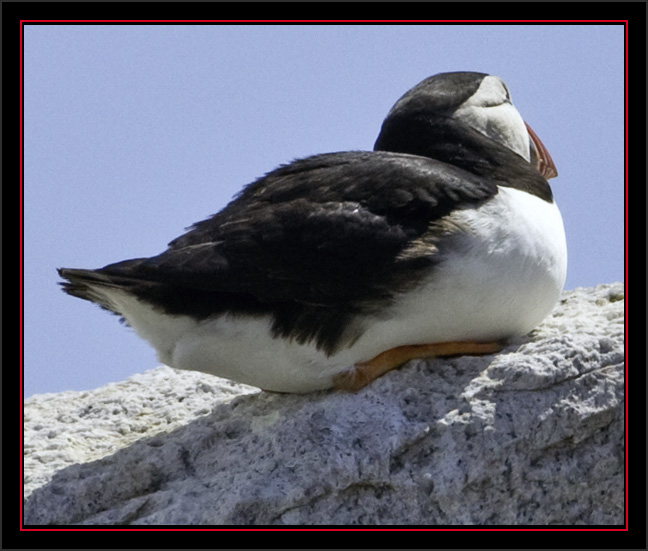
|
As I poked about in the ledge Brian called out from the boat ramp that we had to start packing up shortly. As I walked backed and spoke with him he
indicated he’d received a call from shore. The storm they'd been tracking was coming in and expected to hit mid-afternoon. Brian wanted to be back
in Rockland before this and I had to agree this was best. I still had some time and continued taking exposures as I broke down the tripod and got the
gear ready to travel. This did represent one disappointing aspect however. This was the second time on a seabird island with no time to get to the area
where the puffin chicks were in residence…
Atlantic Puffin...Canon EOS Mark III 1Ds, 1/1600 second at 600mm; EF 600mm f/4L at f/10, ISO 640 |
Preparations to Depart - Matinicus Rock - Maine Coastal Islands National Wildlife Refuge
I packed the gear into several bags as Brian moved the inflatable down the ramp to launch. The morning had flown by I thought as I looked at my watch. I sure could
have used a few more hours but was satisfied with the image group exposed for the time I was allotted. I kept a camera and lens out for the return trip and continued photographing…
Launching the Inflatible - Maine Coastal Islands National Wildlife RefugeCanon EOS Mark III 1Ds, 1/640 second at 70mm; EF 70~200mm f/2.8L at f/11, ISO 640 |
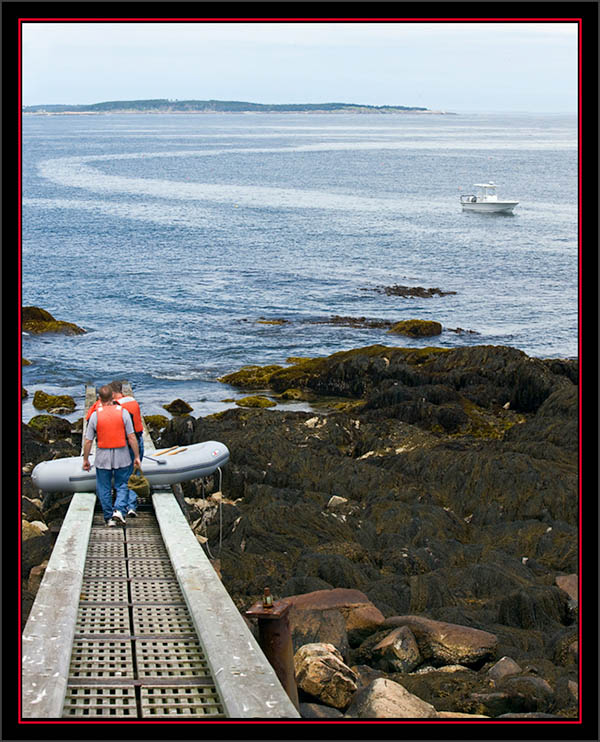
|
Departing Views - Matinicus Rock
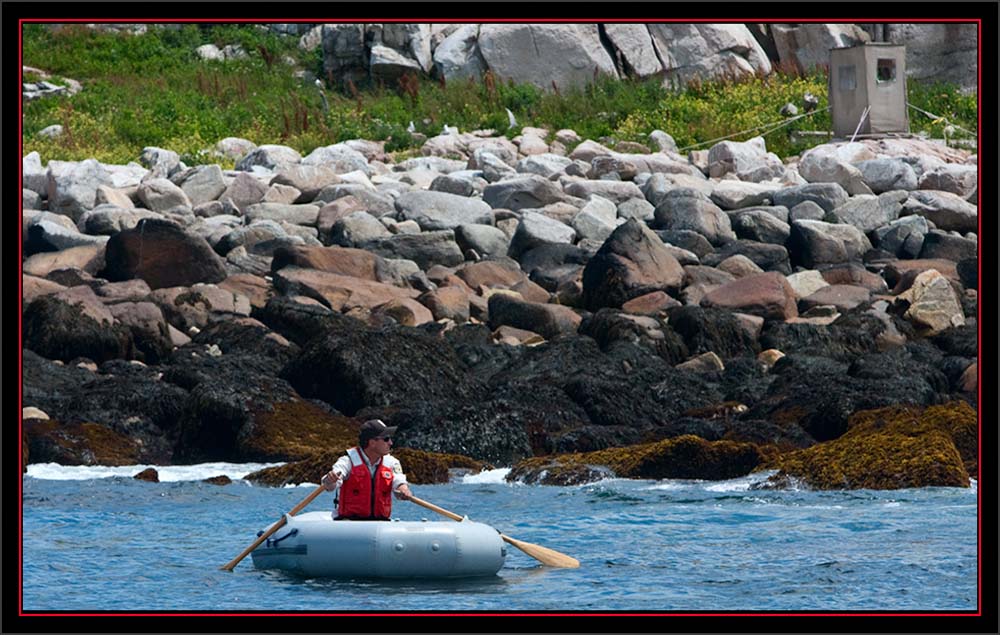
|
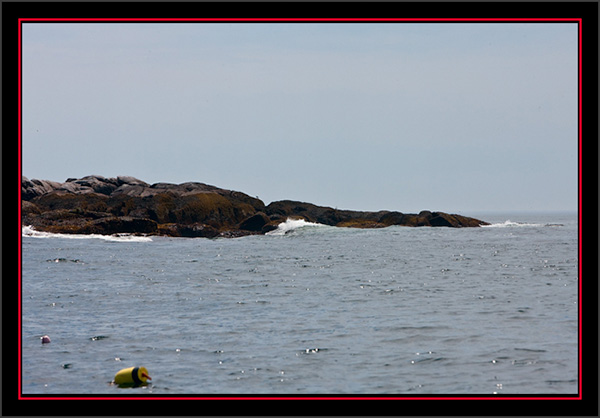
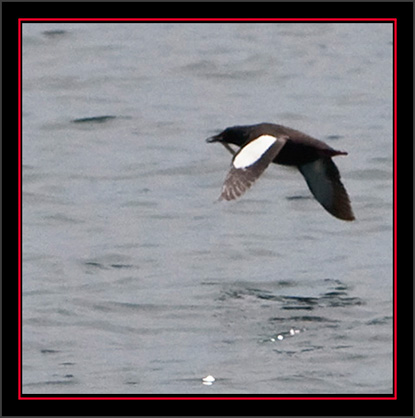
|
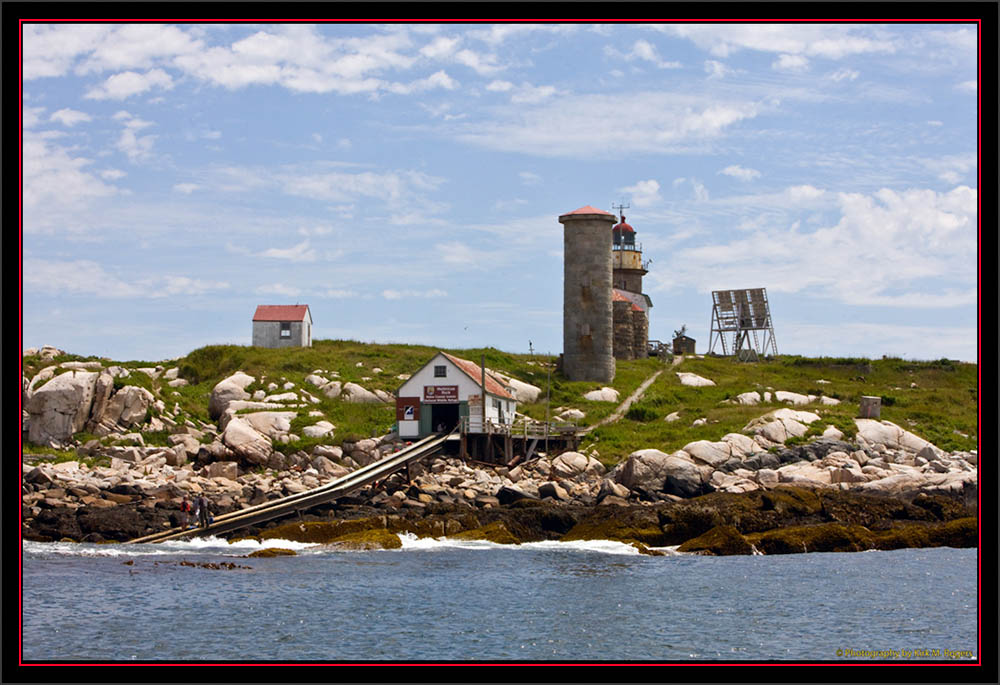
|
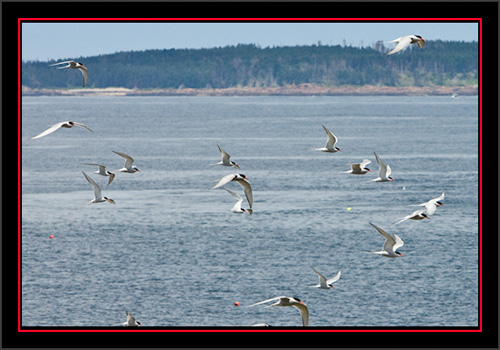
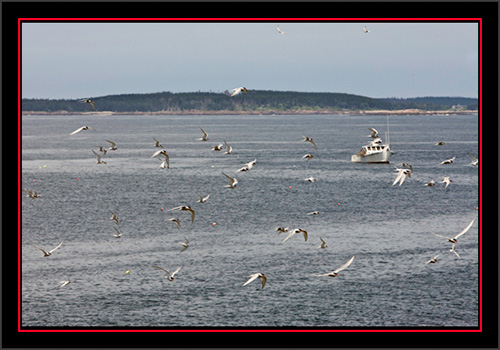
|
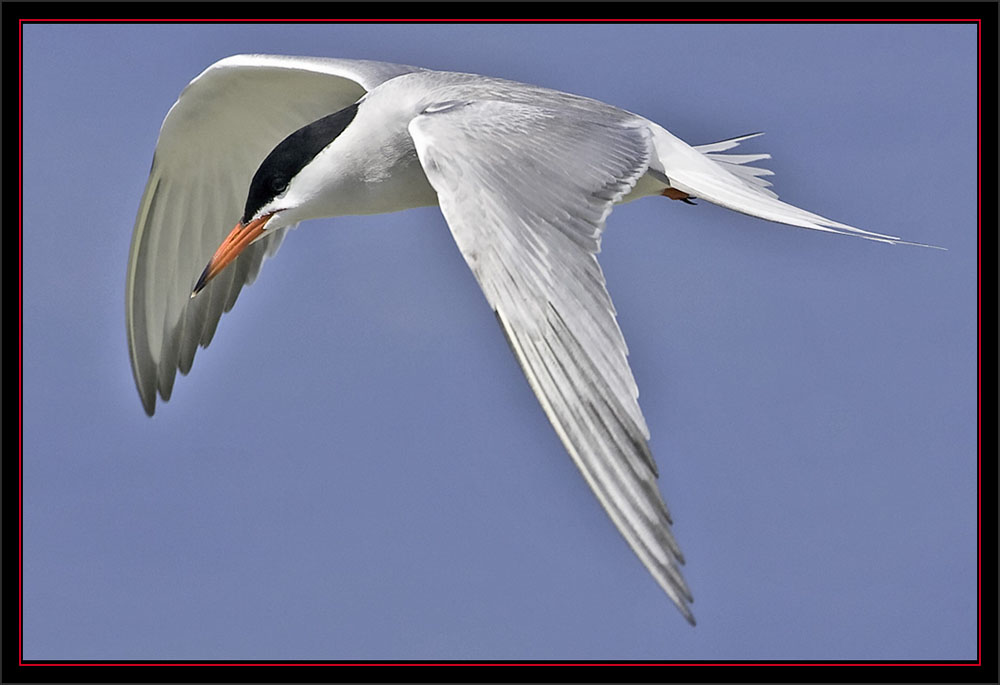
|
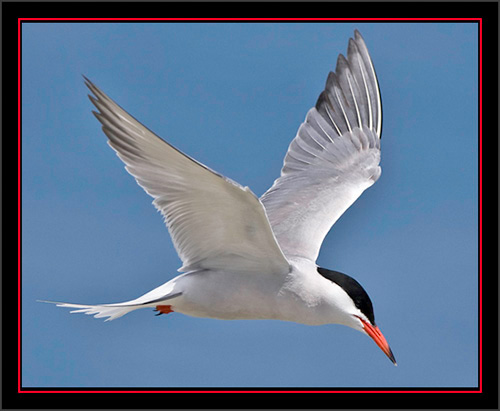
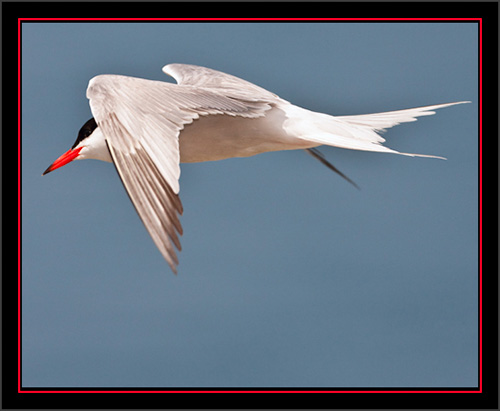
|
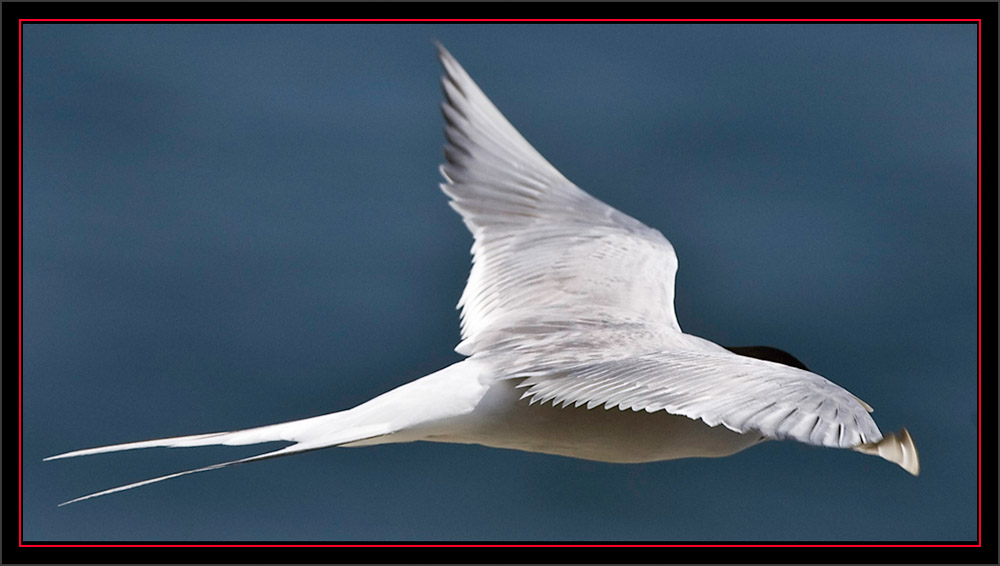
|
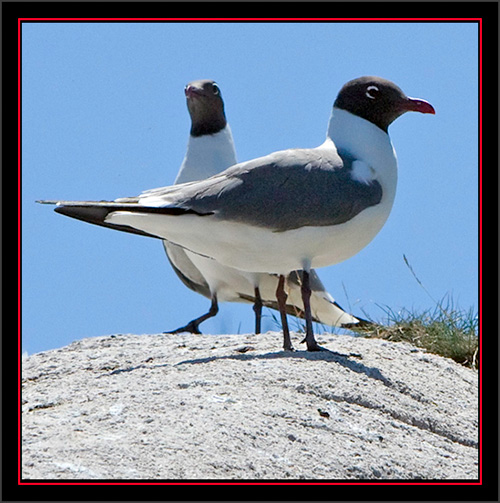
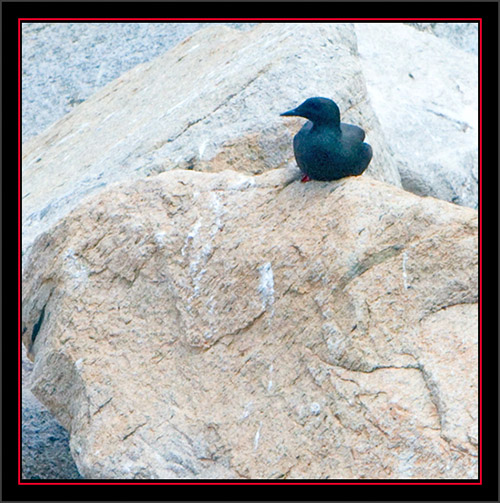
|
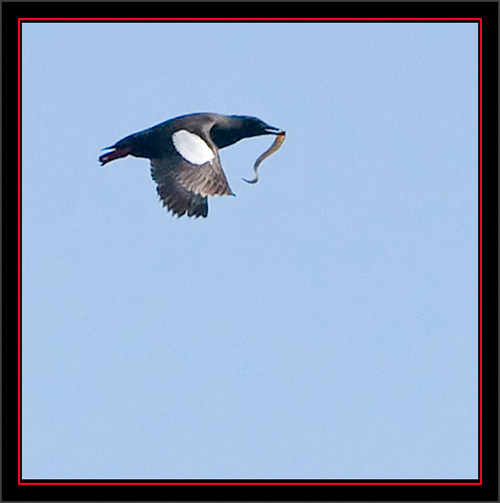
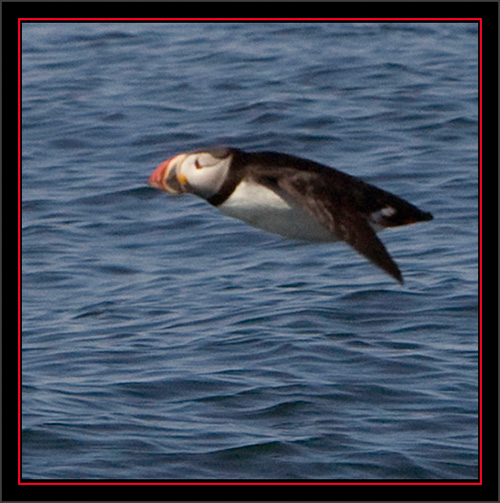
|
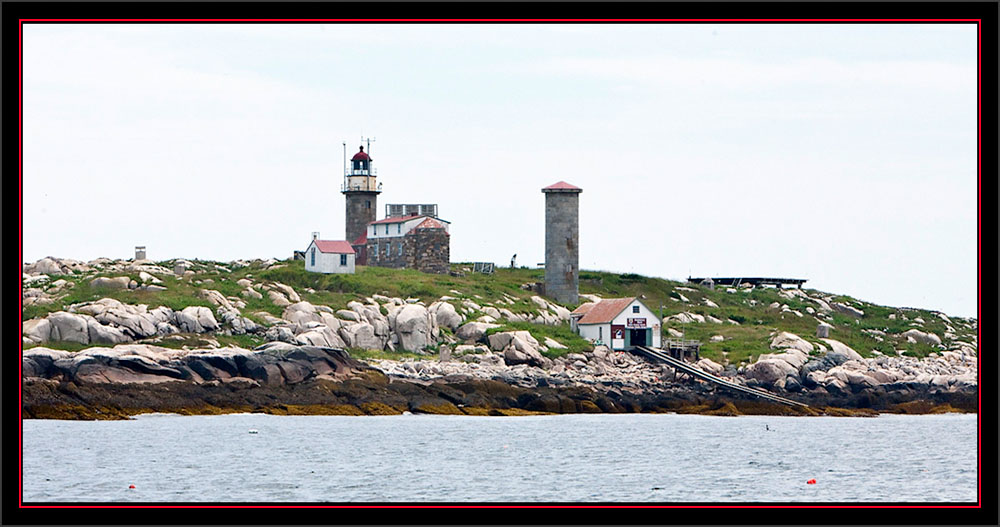
|

|
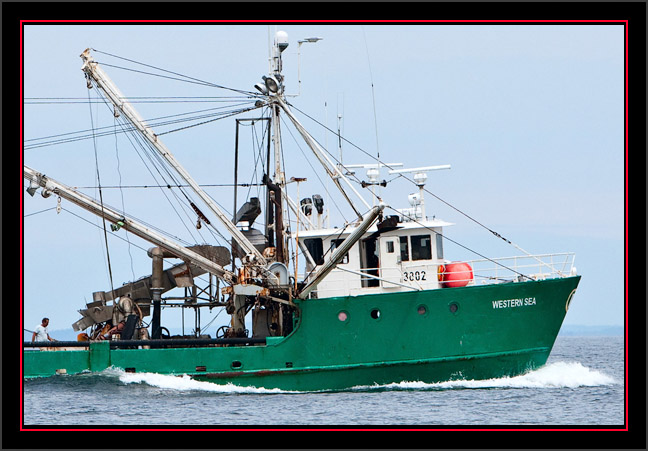
|
Soon enough the five of us were aboard and Brian had us returning to Rockland. The trip back was fun and uneventful, with no sign of a storm front before we tied
up at the pier. It had been nice weather up to this point, warm and sunny - it appeared our trip would end with these conditions. I keep taking exposures on the
return when I could, bracing against the bucking of the boat at full speed. We observed the Wilson’s Storm-Petrels scudding about over the waves again and I took
some images hoping to get one close to the boat.
Working Vessel...Canon EOS Mark III 1Ds, 1/1600 second at 200mm; EF 70~200mm f/2.8LL at f/8, ISO 640 |
Returning Views and the End of the Day...
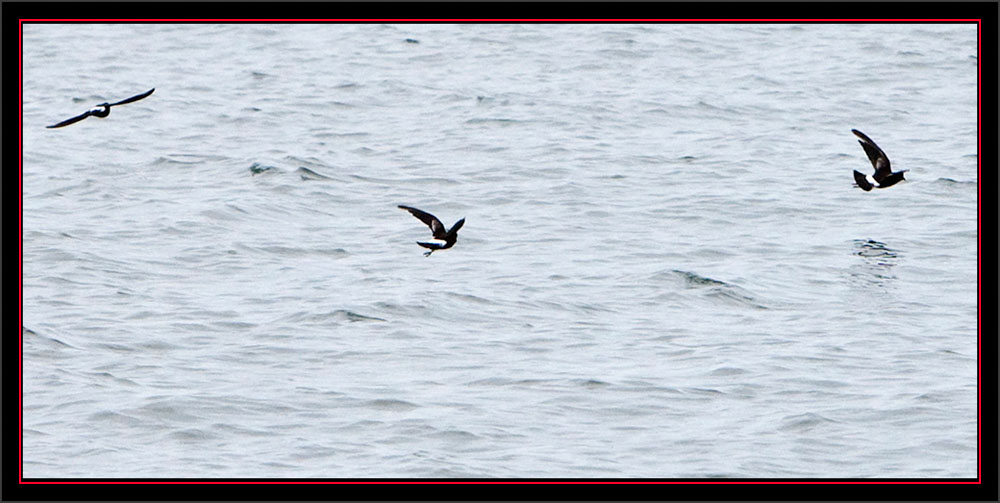
|
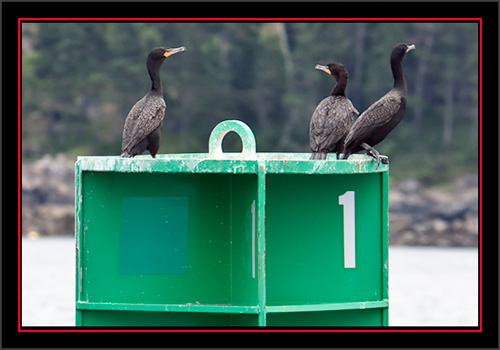
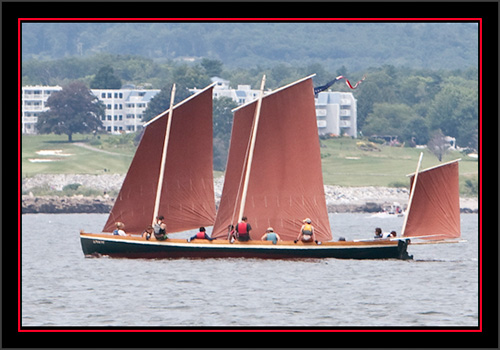
|
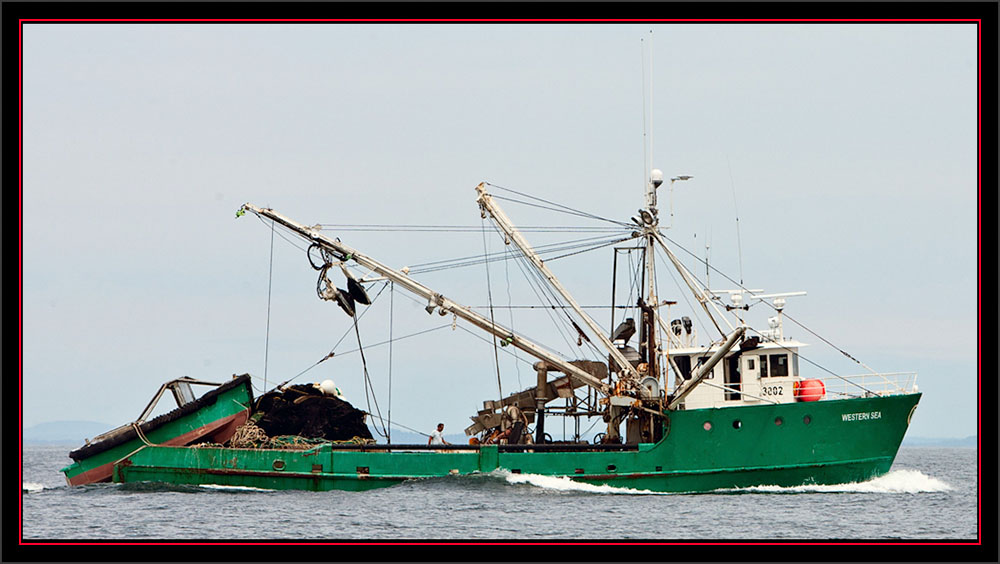
|
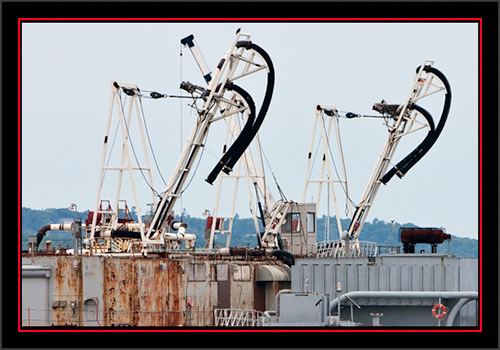
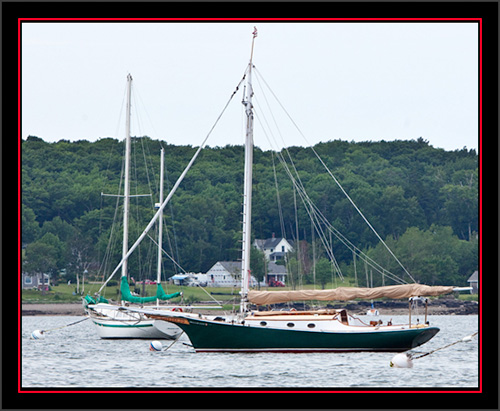
|
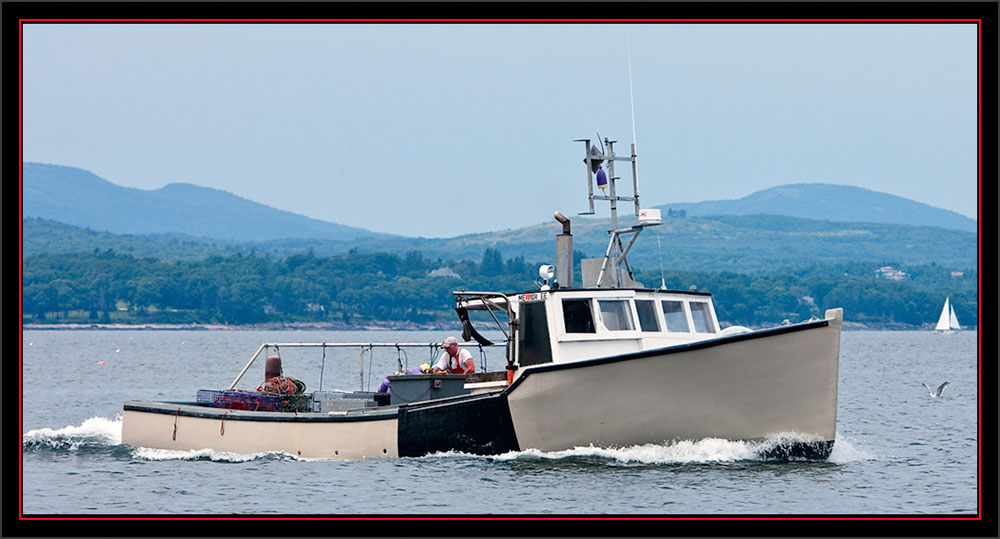
|
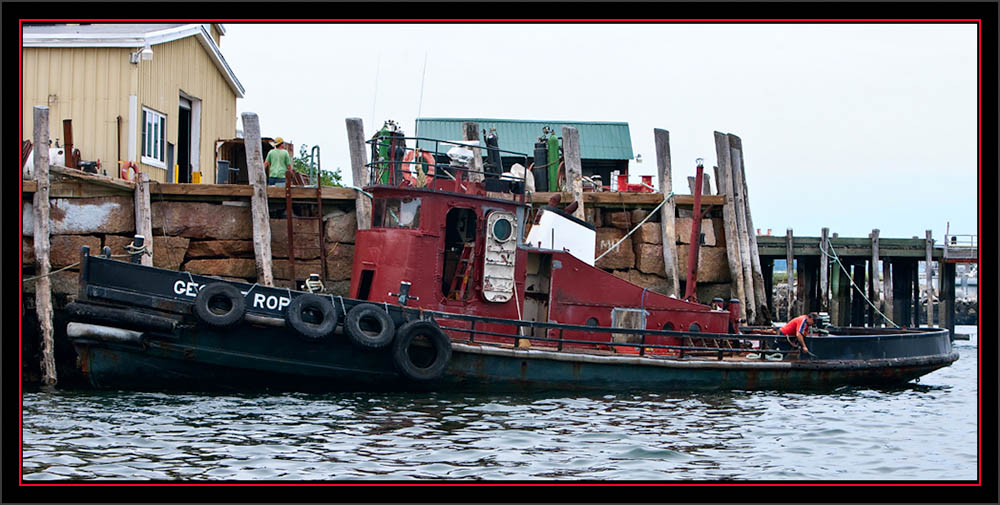
|
|
Once the boat was tied up it was a quick task to get the gear unloaded and up the ramp. Soon enough my companions for the day were loading their vehicles and getting on
the road. I talked with Brian as he backed the trailer down and loaded the boat. Brian asked if I’d like to see the building USFWS had purchased in Rockland to serve as their
offices and the proposed Visitors Center. This tour, a short distance from the boat launch, was excellent. The former day care center had nice finishes, appeared to have
enough room for many pursuits and should serve the refuge well. I hope to be involved with fitting out this new space when the time comes and plan to help in any fashion possible.
It had been a good day. I knew in just a few hours I’d be in my digital lab starting to evaluate the image group from Matinicus Rock… The Working Waterfront...Canon EOS Mark III 1Ds, 1/640 second at 200mm; EF 70~200mm f/2.8L at f/506, ISO 640 |
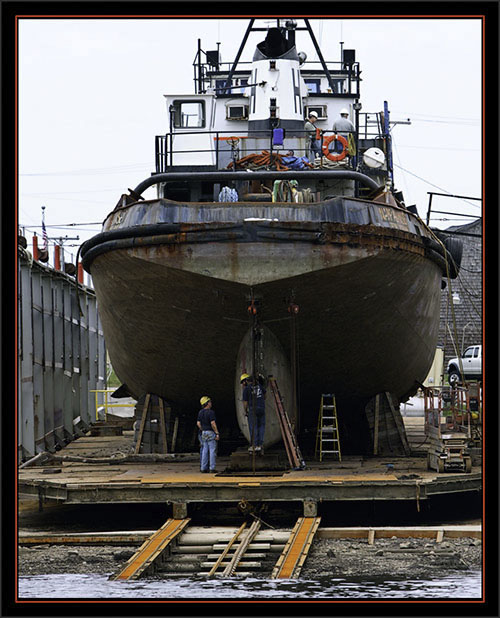
|
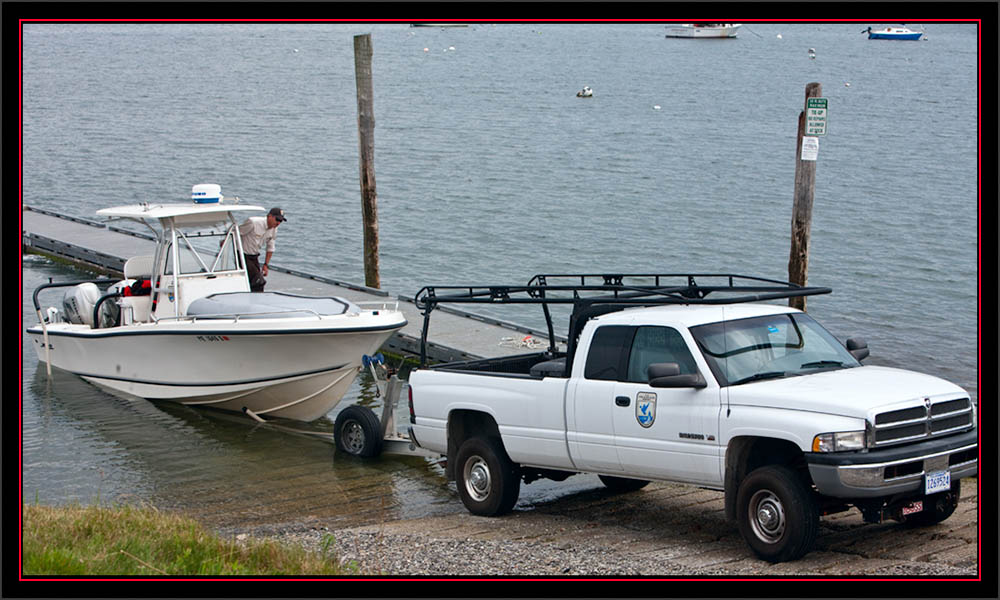
|

|
I wish to thank Beth Goettel and Brian Benedict, Manager and Deputy Manager, of the Maine Coastal Islands National Wildlife Refuge for the opportunity to make this trip to Matinicus Rock…
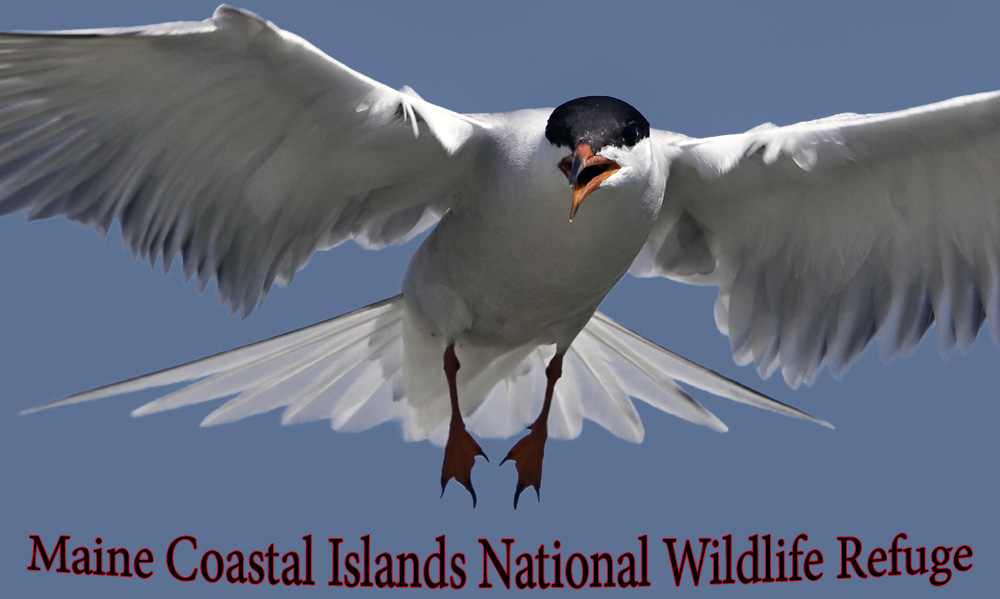
|